Ronda, Spain offers a wealth of attractions that would appeal to various professionals and enthusiasts:
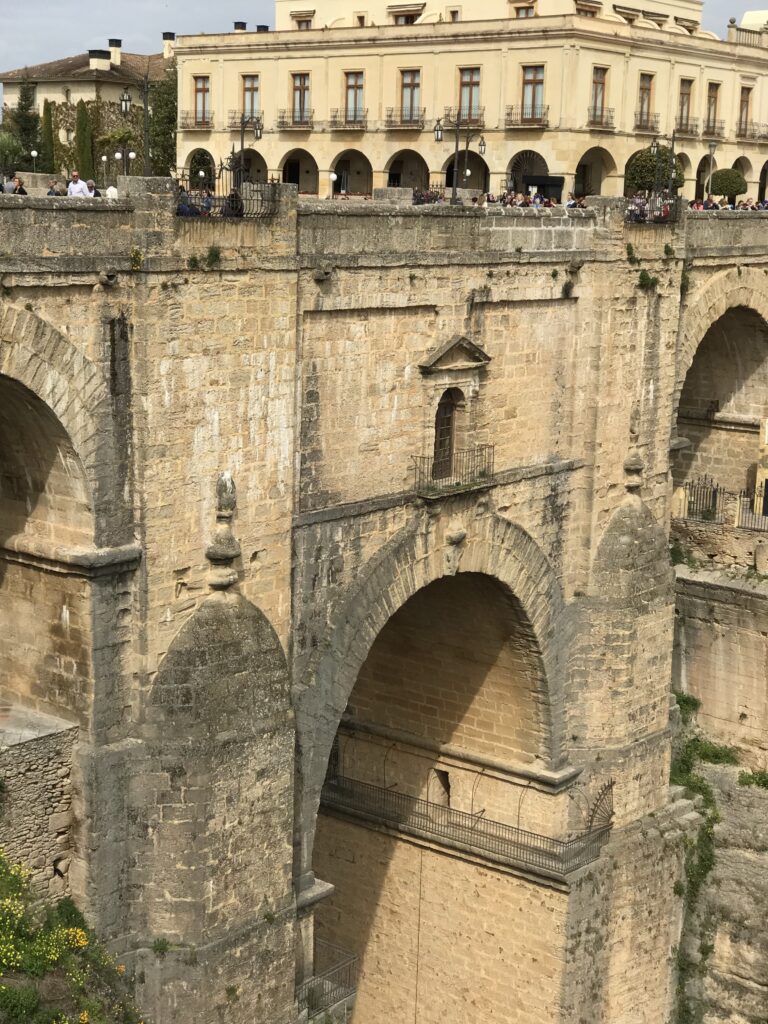
For the Historian
The historian would be fascinated by Ronda’s rich history, which dates back to prehistoric times. Key points of interest include:
- La Ciudad: The old Arab Medina, showcasing well-preserved Islamic architecture2.
- Palacio de Mondragón: A 14th-century palace that now serves as a museum dedicated to the city’s history1.
- Baños Árabes: 13th-century Arab baths that offer insights into Moorish bathing culture1.
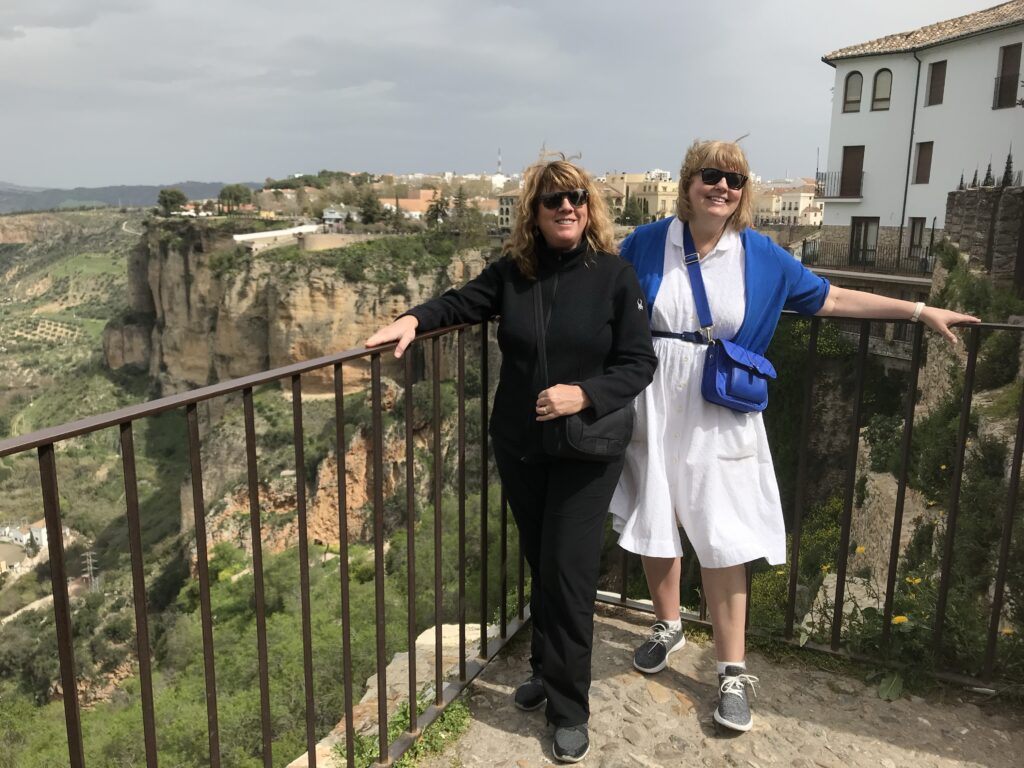
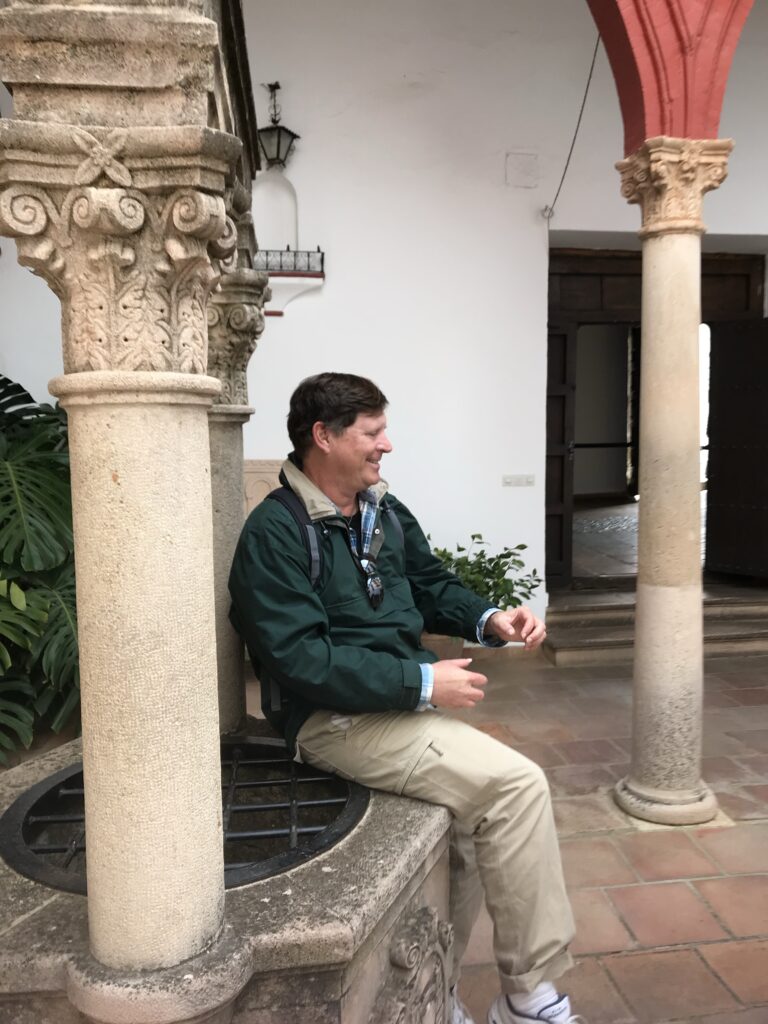
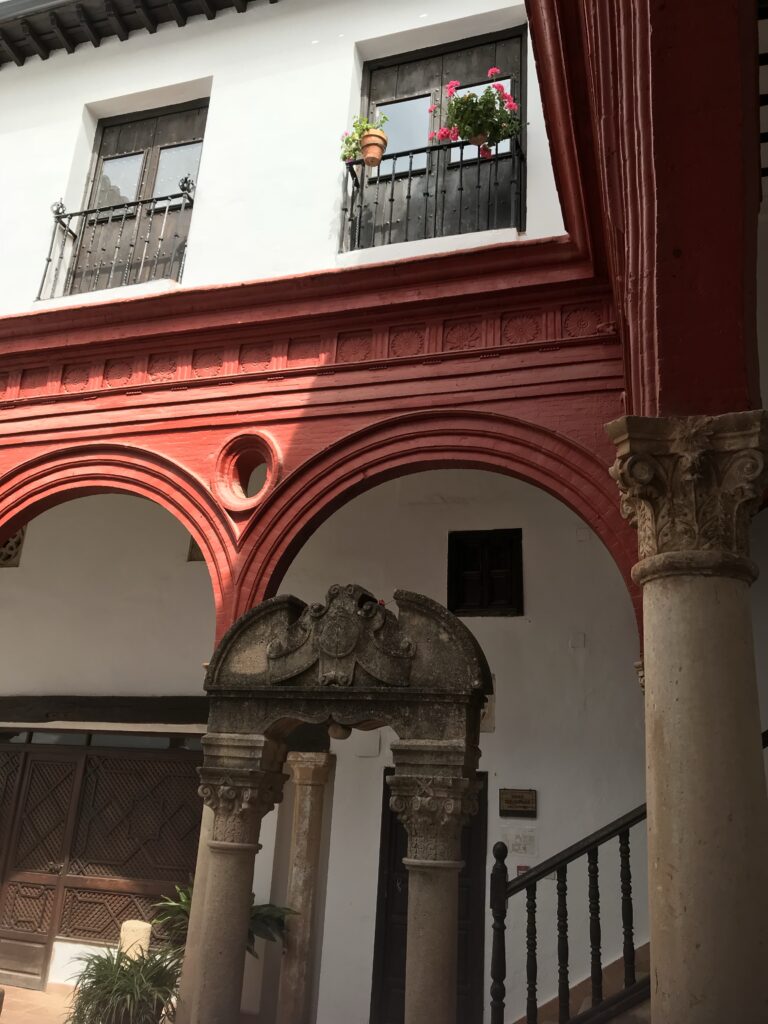
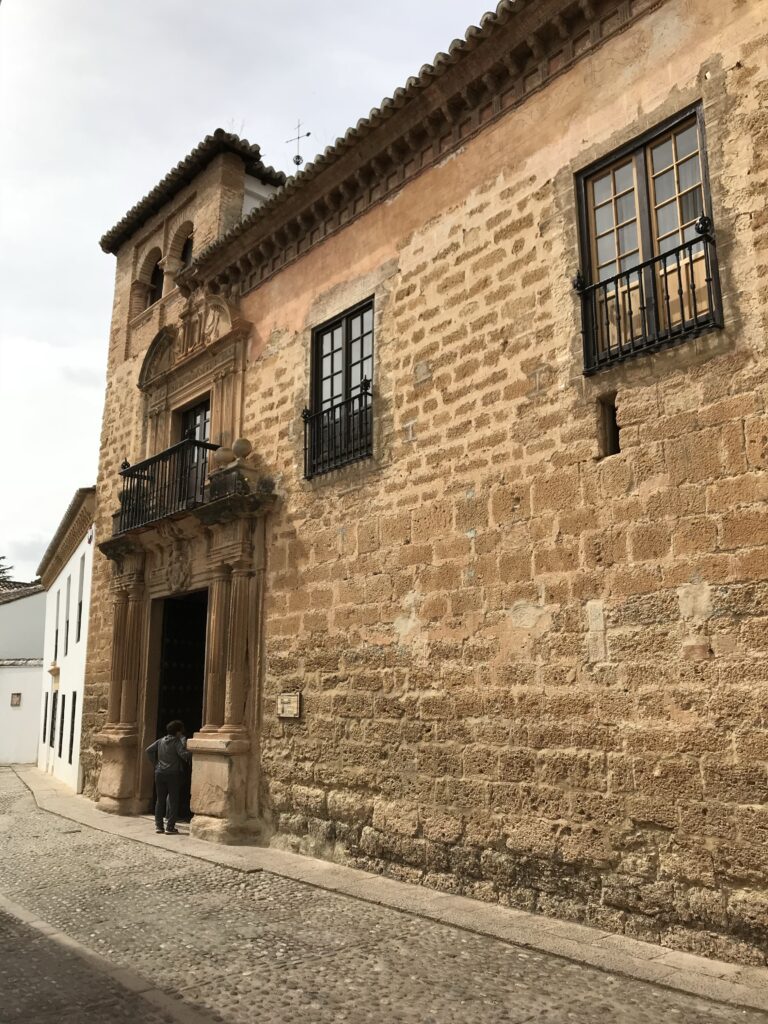
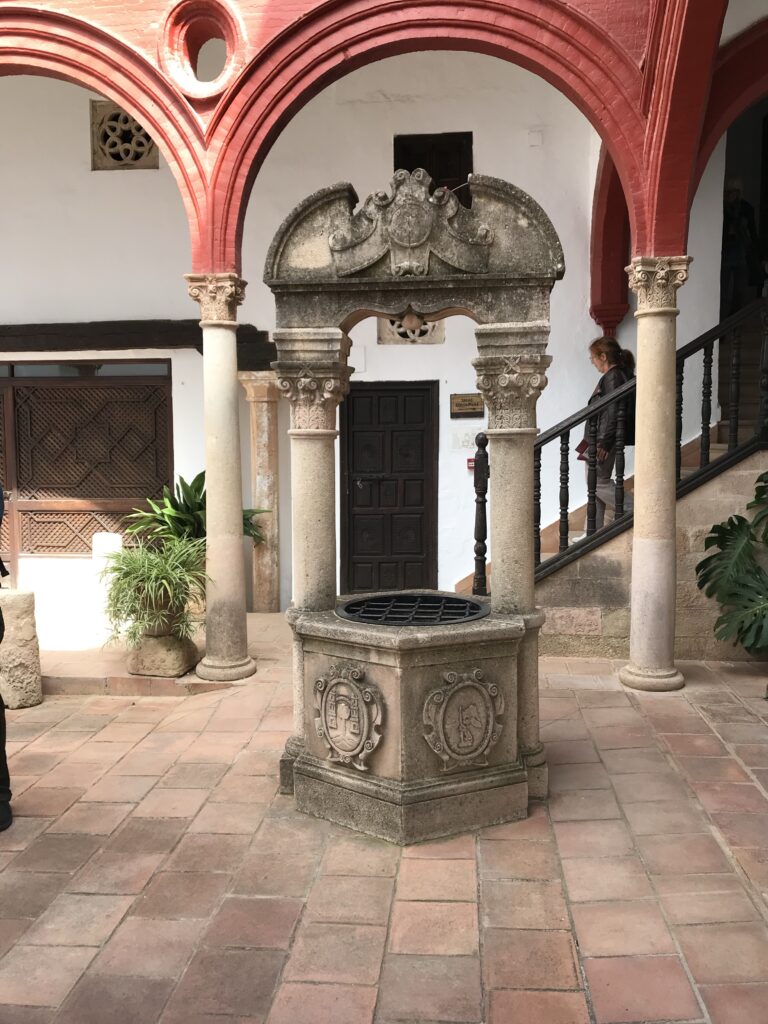
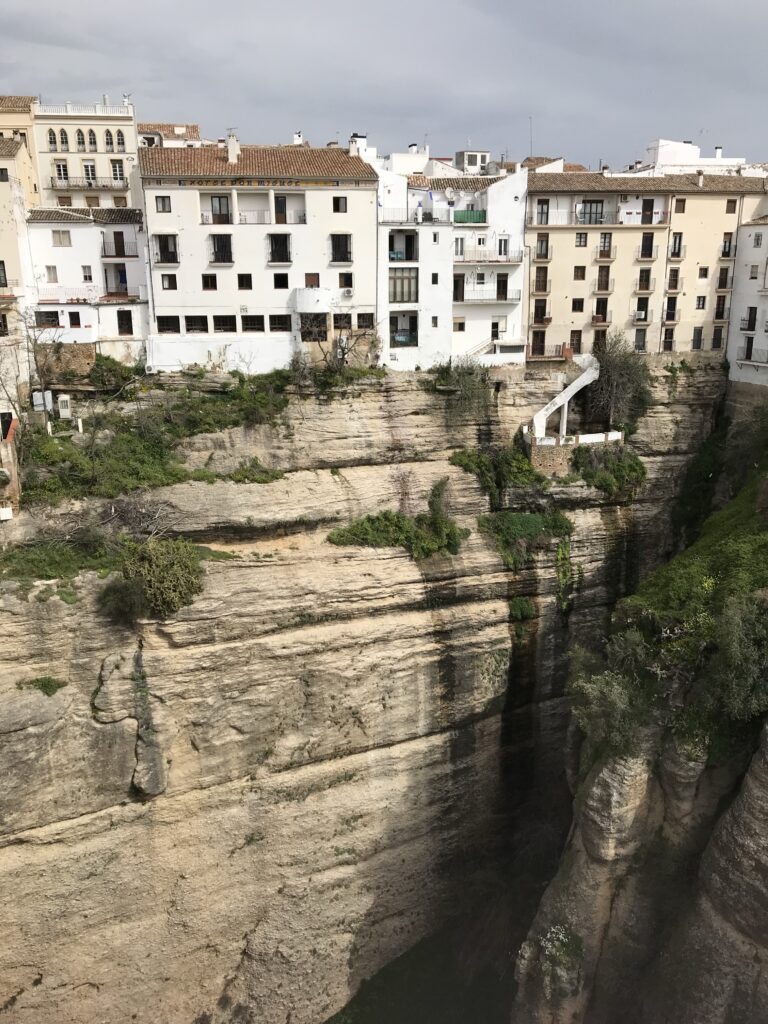
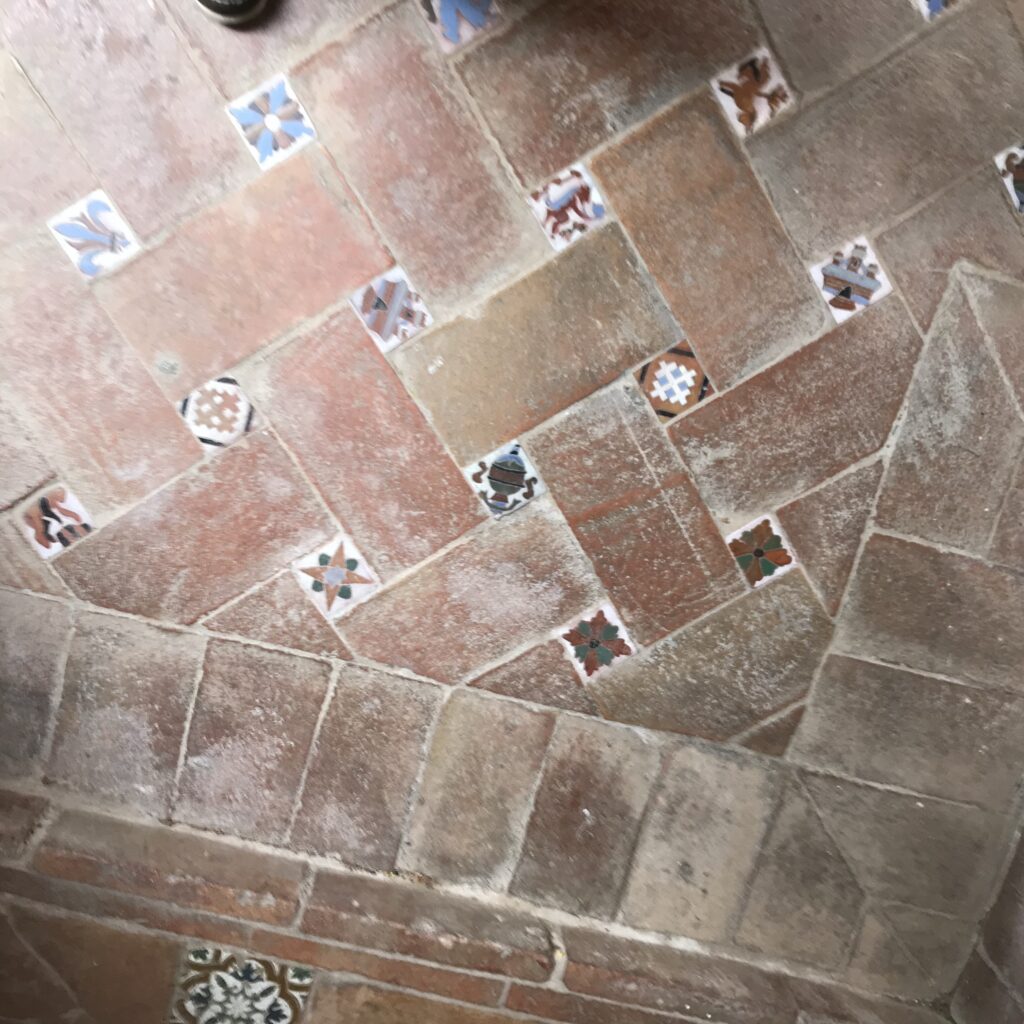
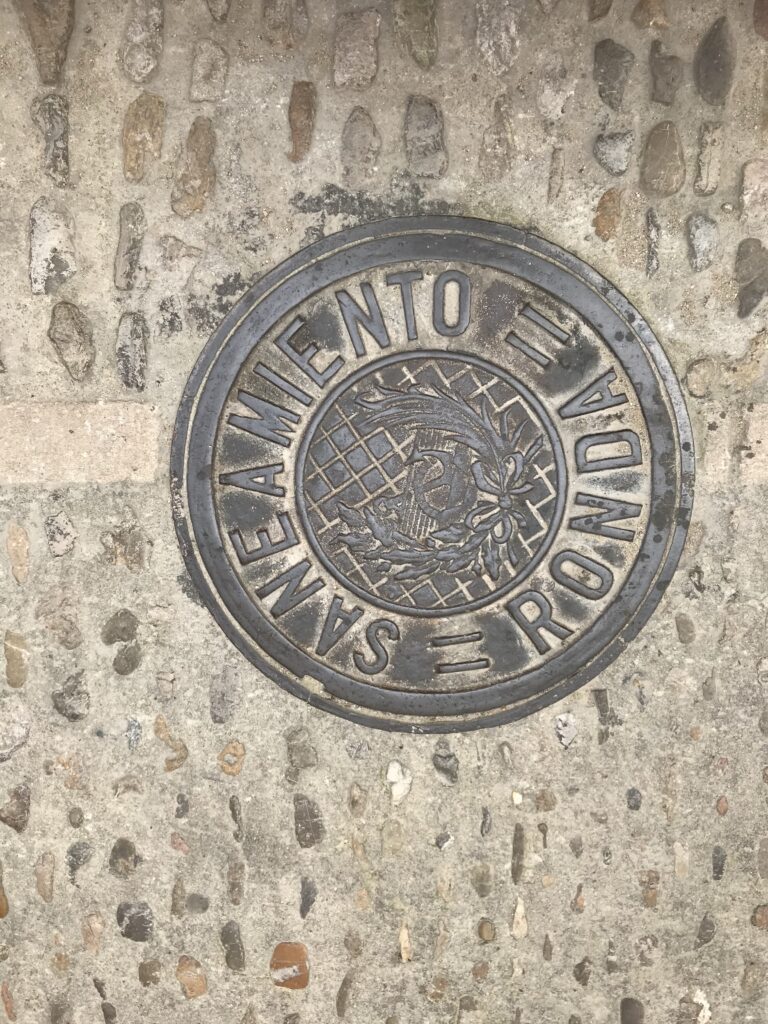
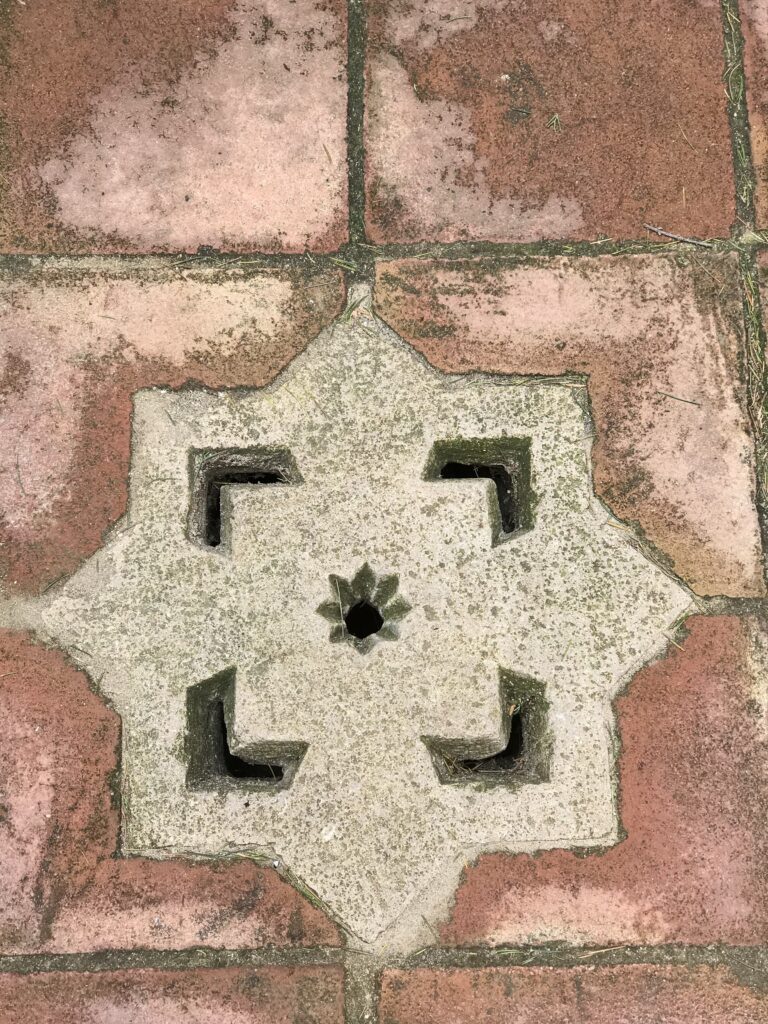
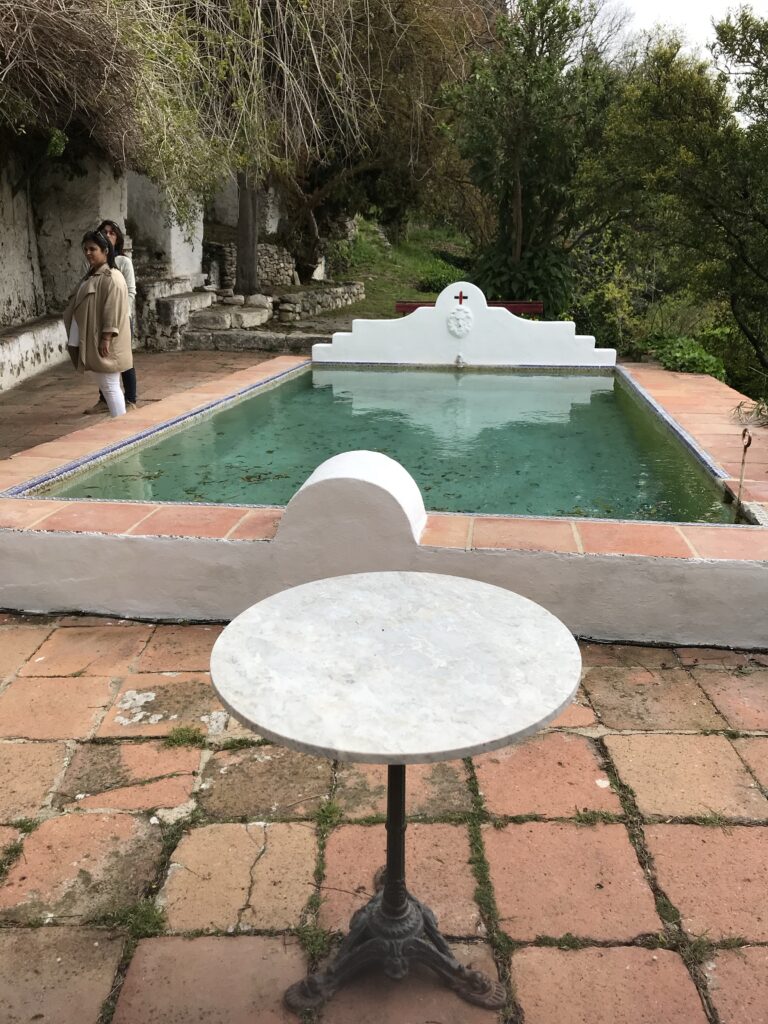
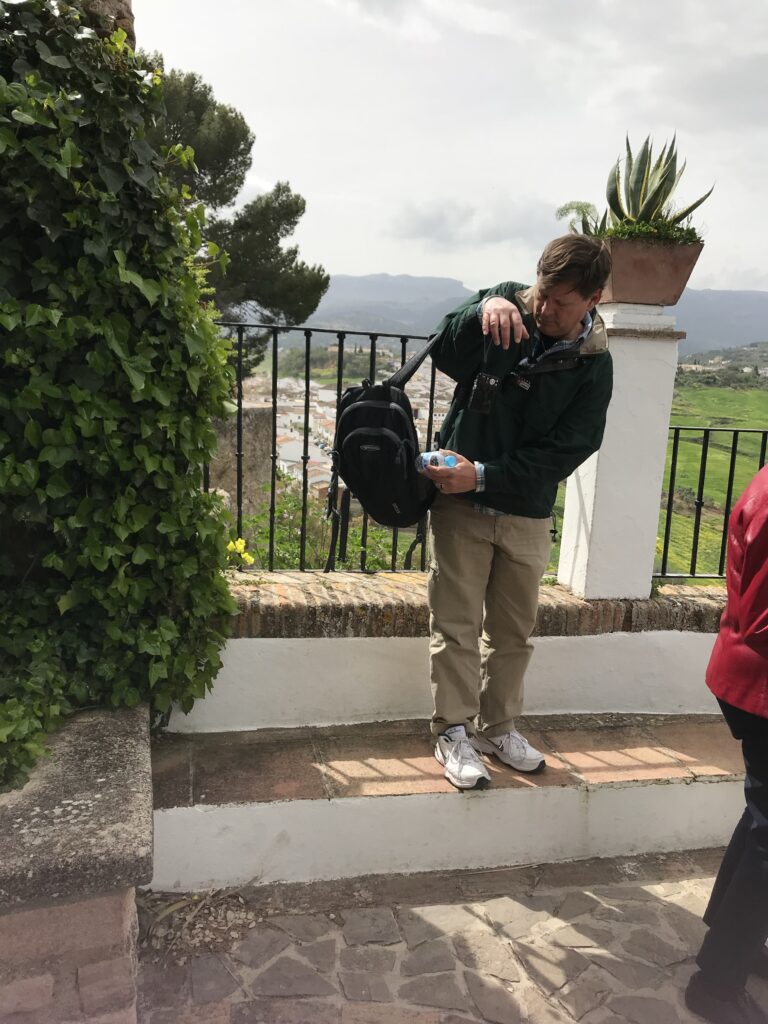
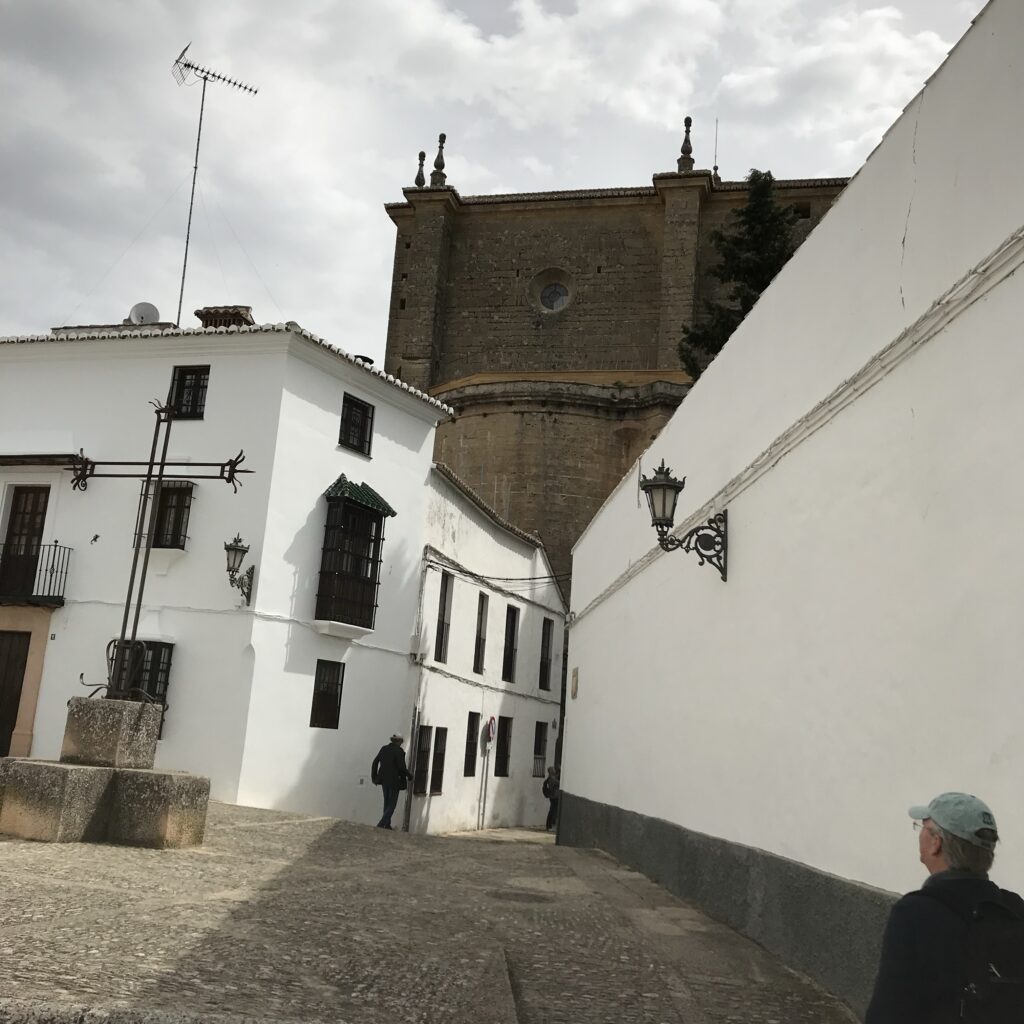
The human presence in Acinipo (Old Ronda about 20 miles from its current location) began around the year 3000 B.C., although little is known about this period.
In the ninth century B.C., Acinipo came into contact with the Phoenicians established in the Malaga coast, thus beginning the Iron Age. Some time later the place is abandoned, and repopulated again in the V century B.C., becoming a walled Iberian city.
The arrival of the Romans in 206 B.C. produced major changes in Acinipo, as the minting and the construction of large public buildings. The splendor of the city lasted until the second century A.C. Then Acinipo began its decline, gradually being abandoned and replaced by Ronda as the main centre of the mountain range. In Moorish times, the old theater became a watchtower.
Sign at Acinipo site
Acinipo was known from the sixteenth century onwards as “Ronda la Vieja”. The first excavations did not begin until 1967. And although new campaigns were conducted, currently most of the city is still to be investigated.
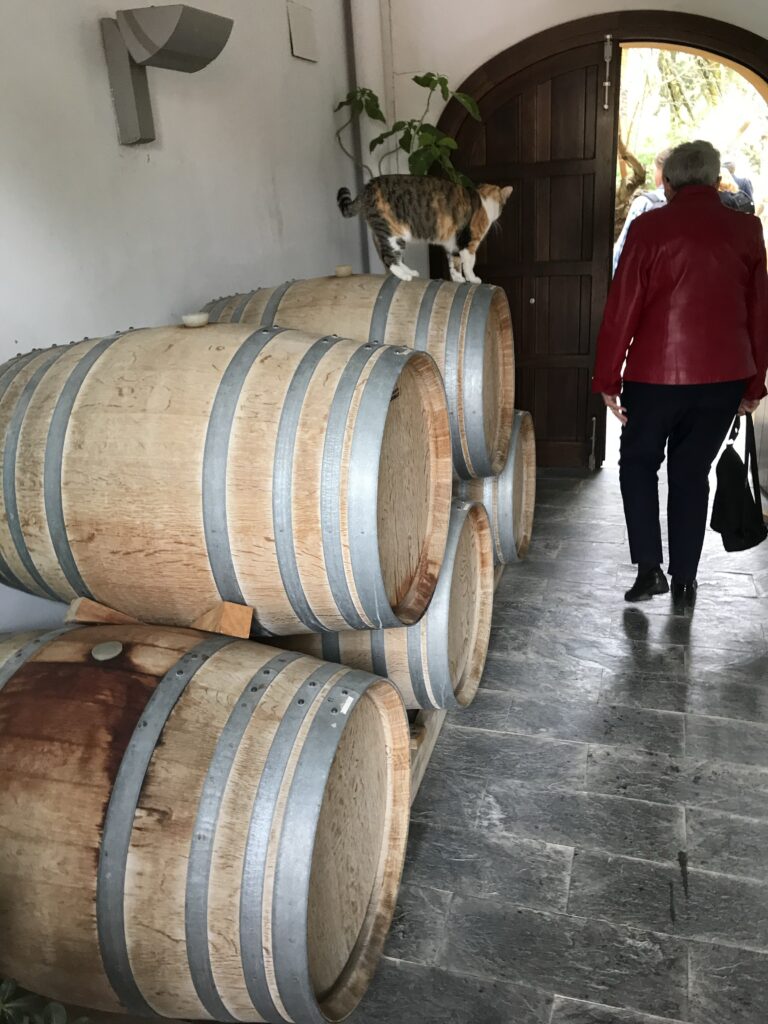
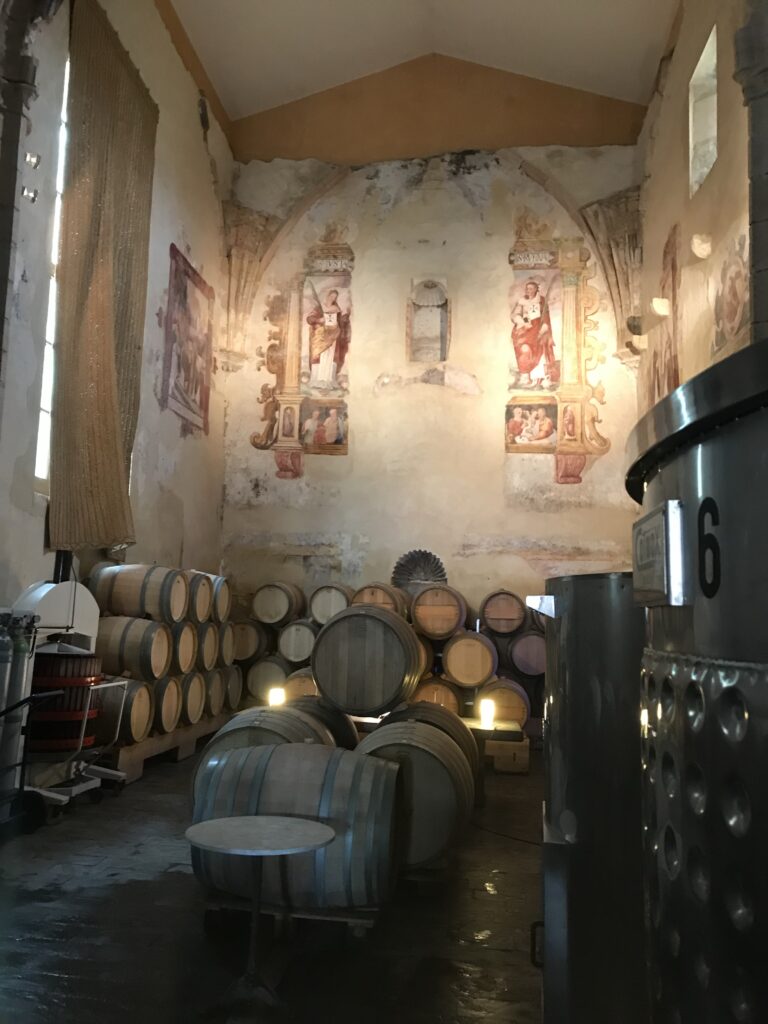
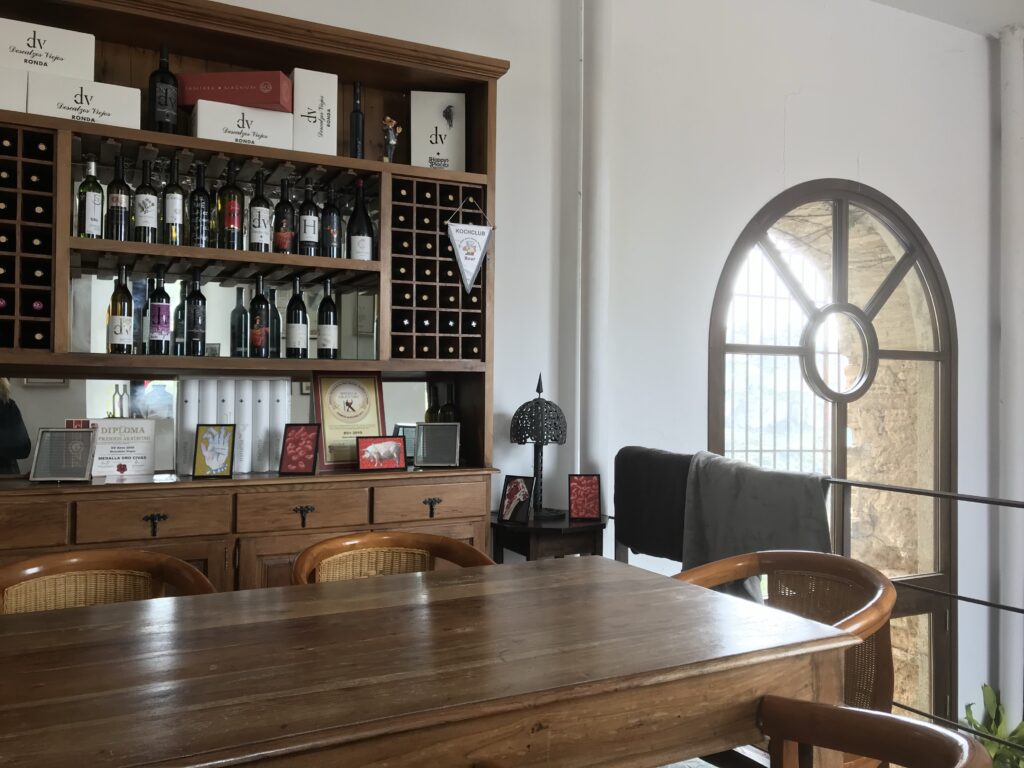

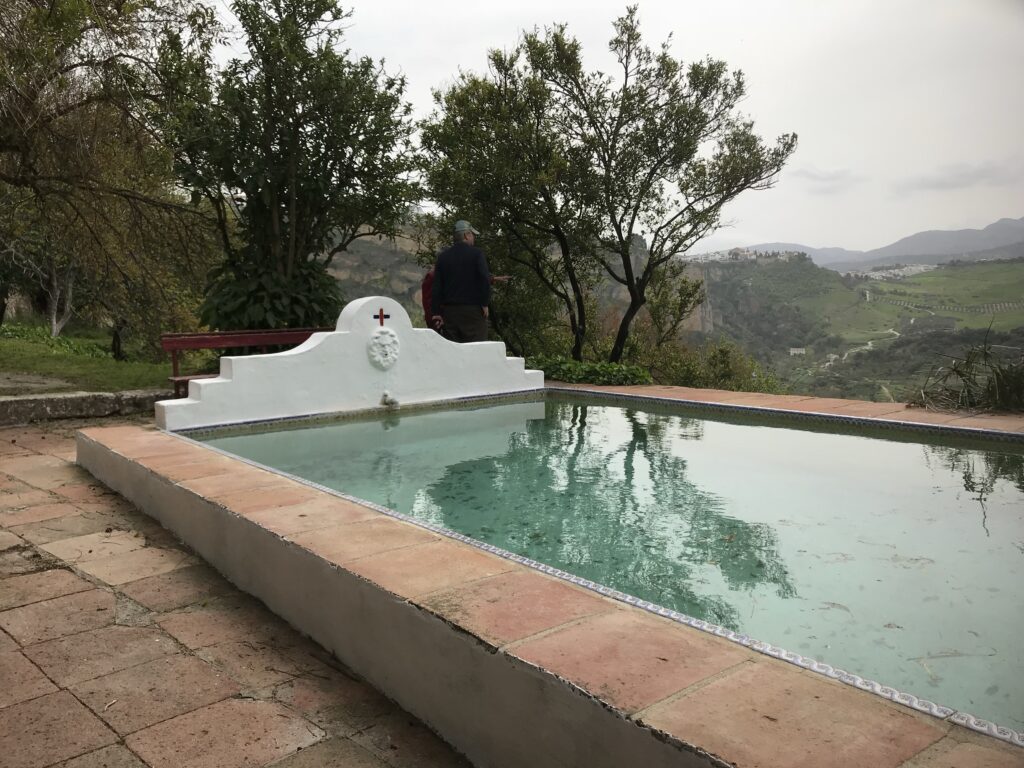
The triple bunch of grapes on Acinipo’s coins holds significant symbolism related to the region’s agricultural and economic history.

Grapes were a key product of Acinipo, reflecting the area’s prominence in wine production during ancient times23. The term “Acinipo” itself is believed to derive from Latin and Greek roots related to grapes, suggesting that the city was known as “Wine City”3. The depiction of grapes on coins underscores the importance of viticulture to Acinipo’s economy and identity, highlighting its role as a center for wine-making and trade45.
The current Ronda has a significant history related to both horse training and military importance:
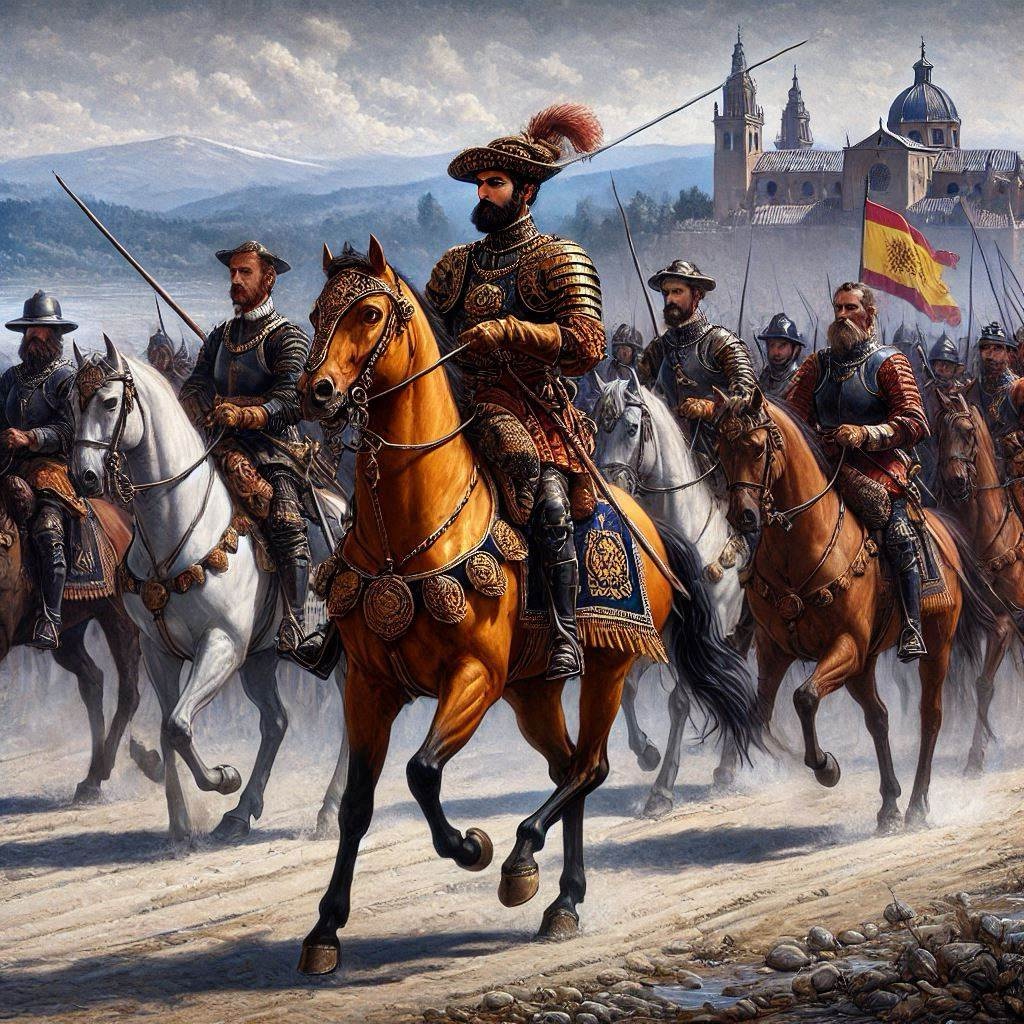
Horse Training
- Real Maestranza de Caballería de Ronda: Founded in 1572 by King Felipe II, this institution was established to train an aristocratic, well-disciplined cavalry for the defense of the realm135. It focused on equestrian skills, including dressage and bullfighting on horseback, which later evolved into modern bullfighting traditions15.
Military Significance
- Strategic Location: Ronda’s position made it a strategic military site throughout history. During the Reconquista, its proximity to Castilian territories made it a focal point for military campaigns2.
- Spanish Civil War: Ronda was a site of significant conflict during the Spanish Civil War, experiencing control shifts and violent reprisals4.
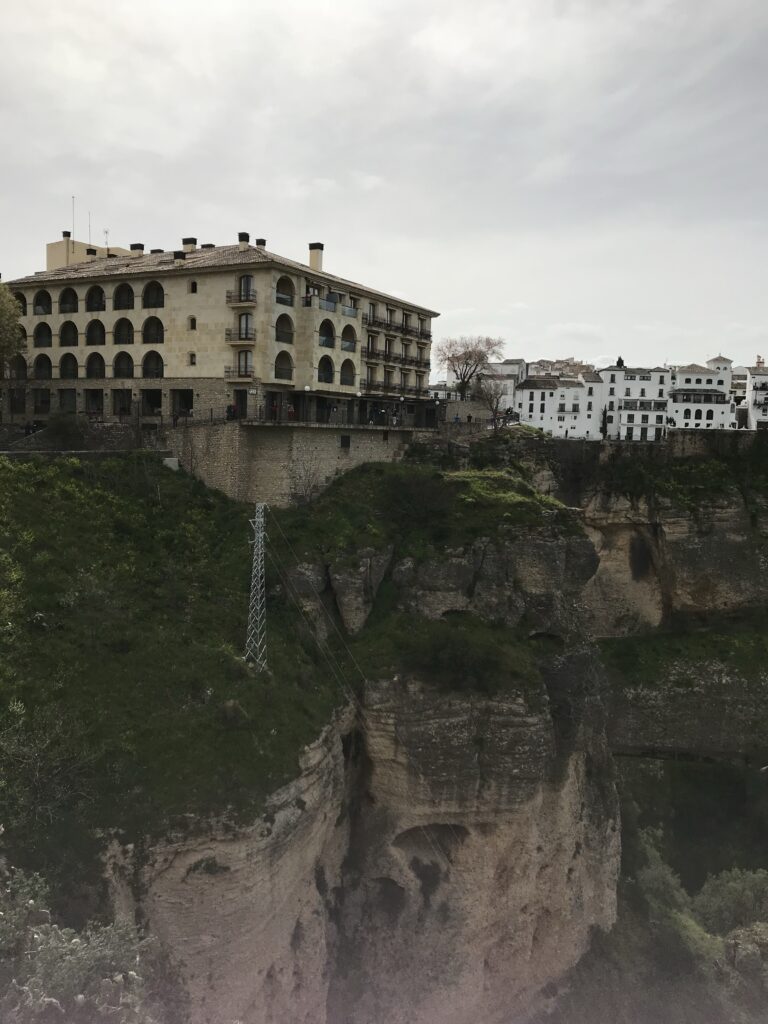
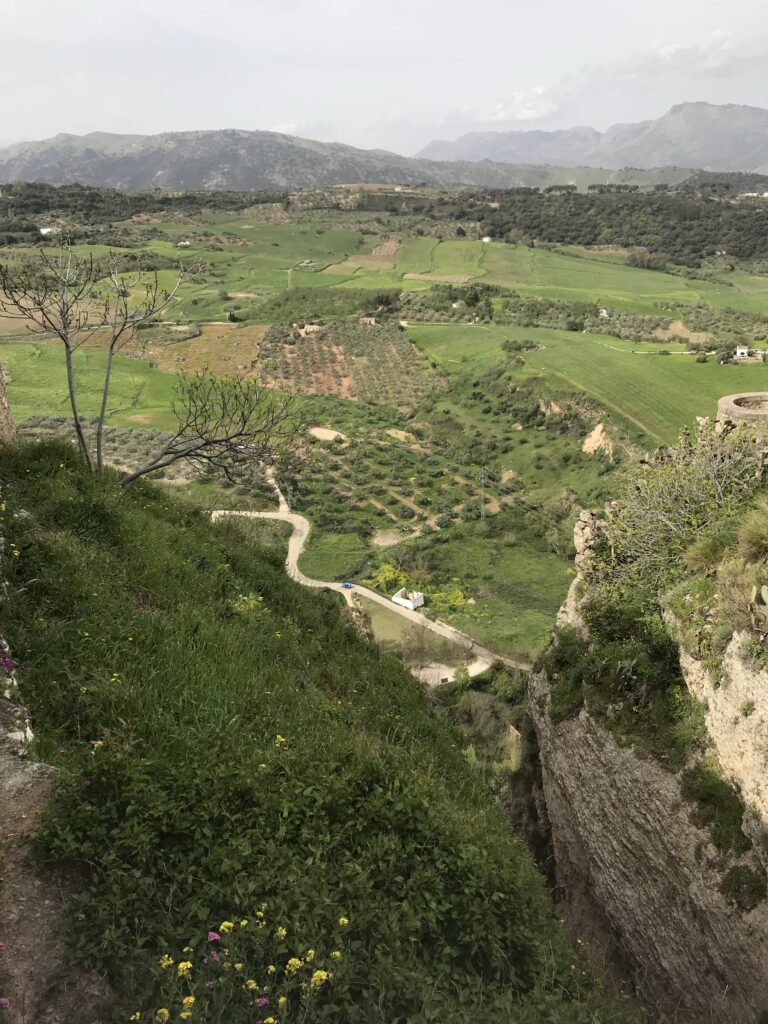
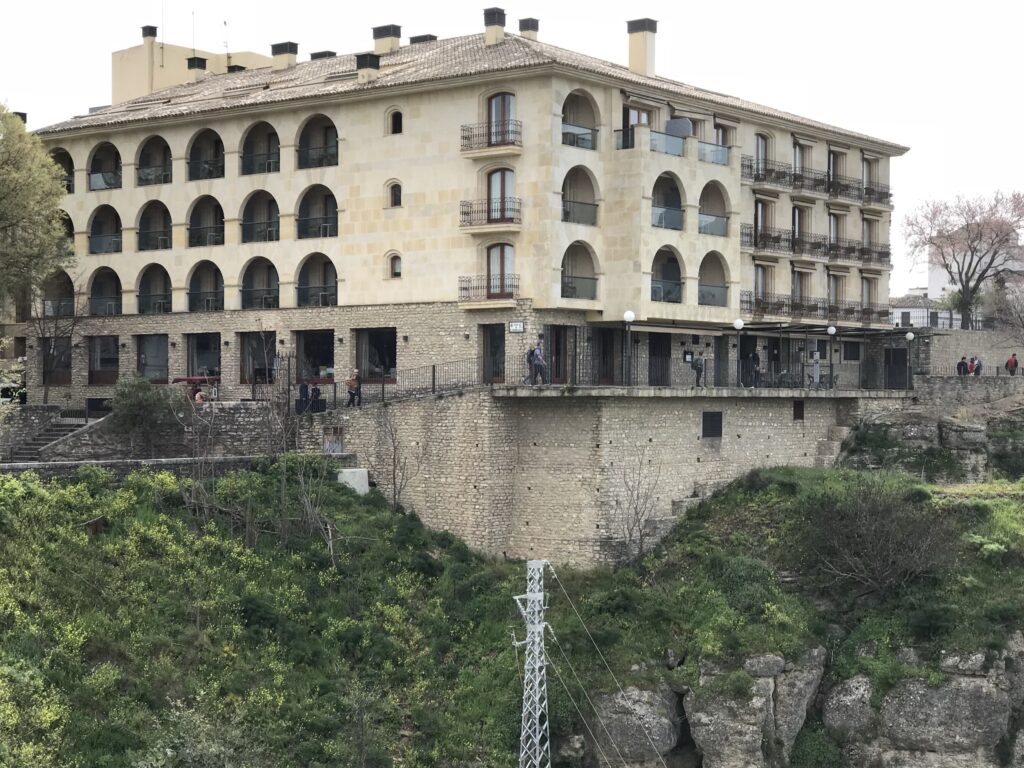
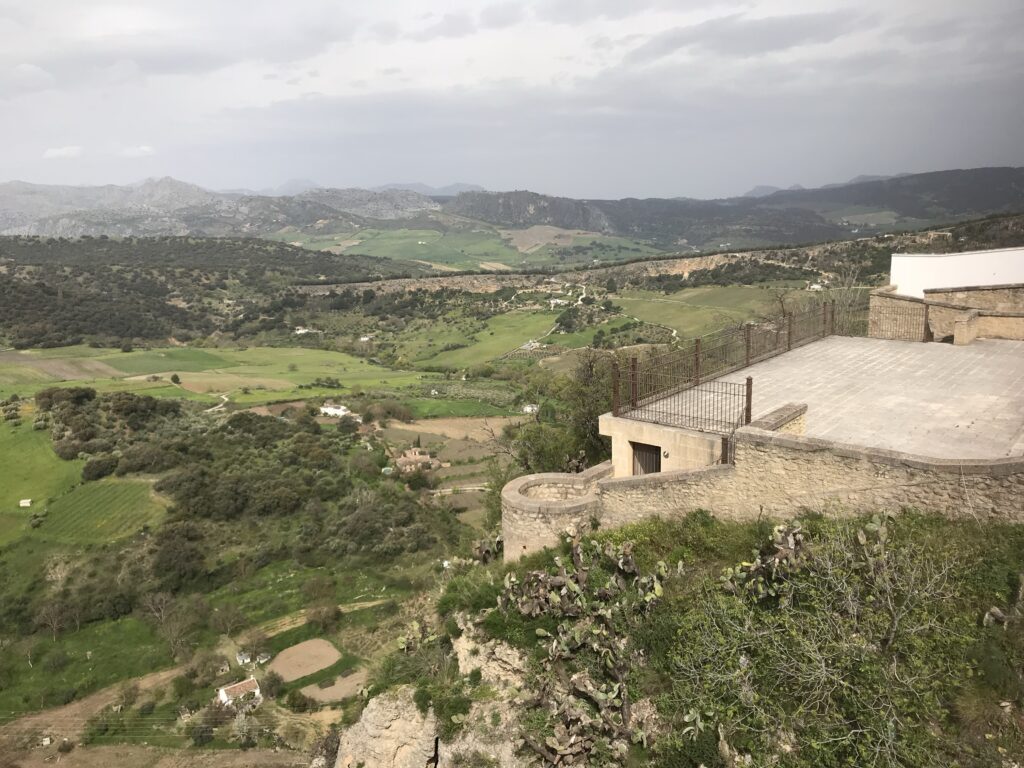
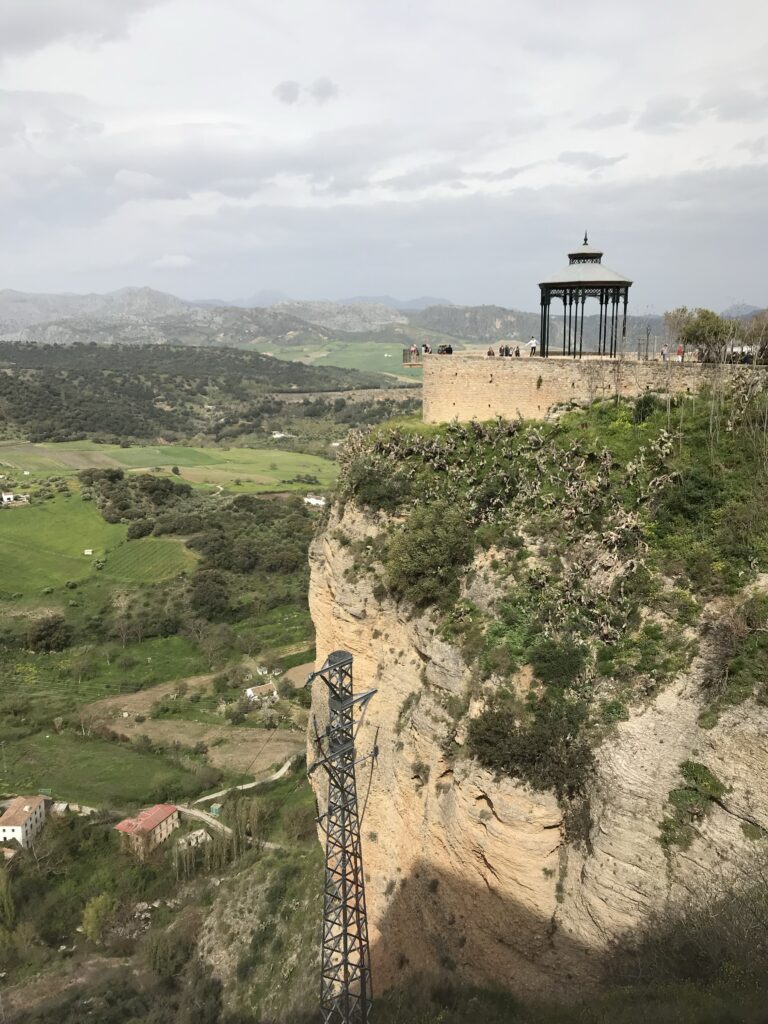
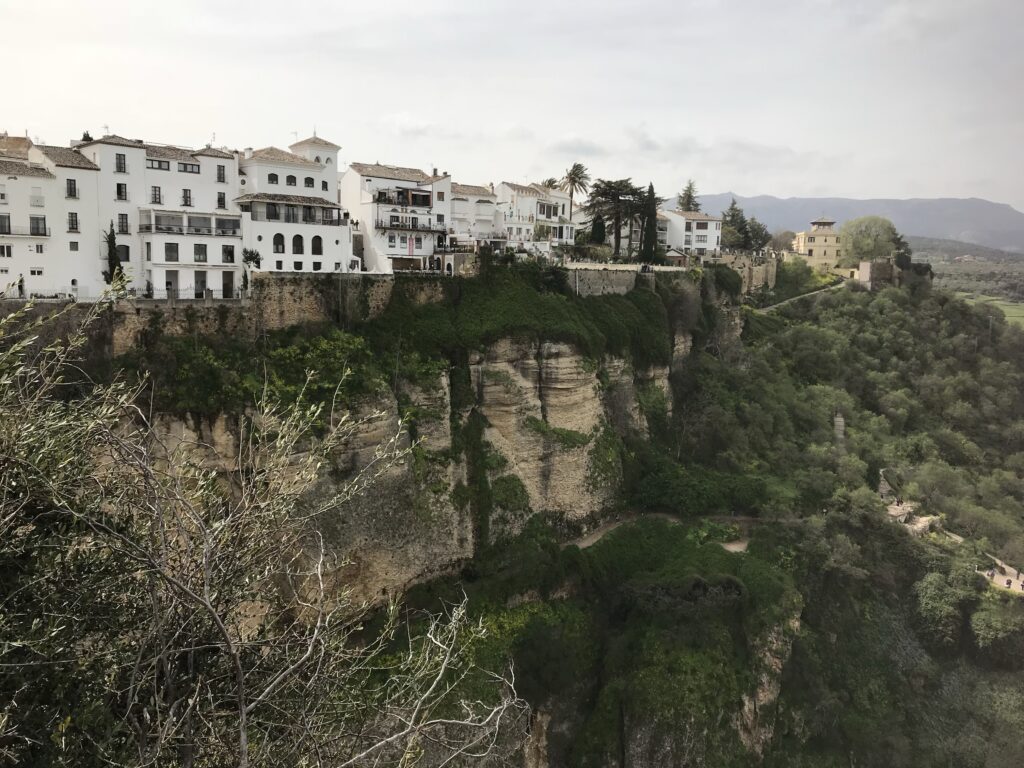
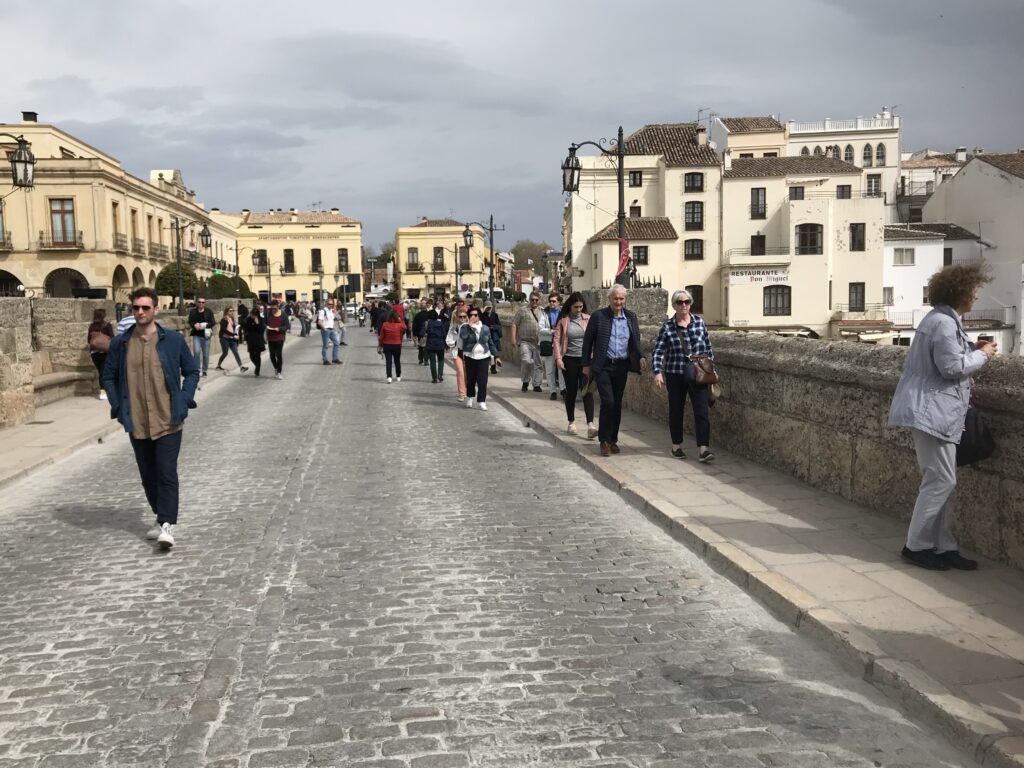
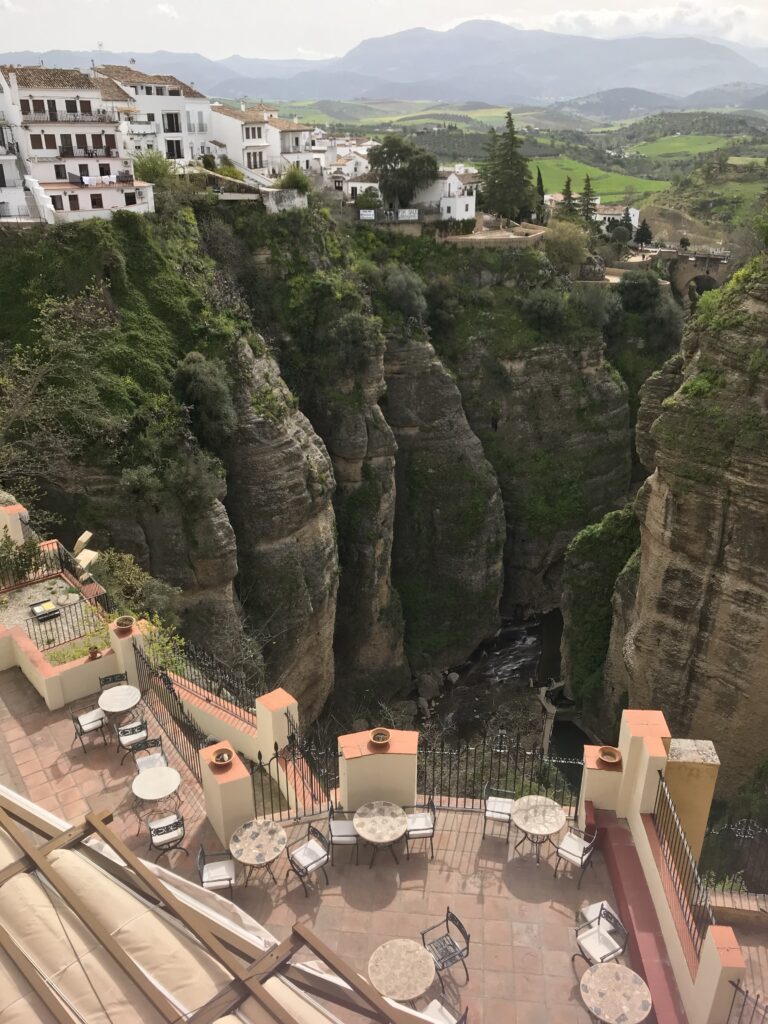
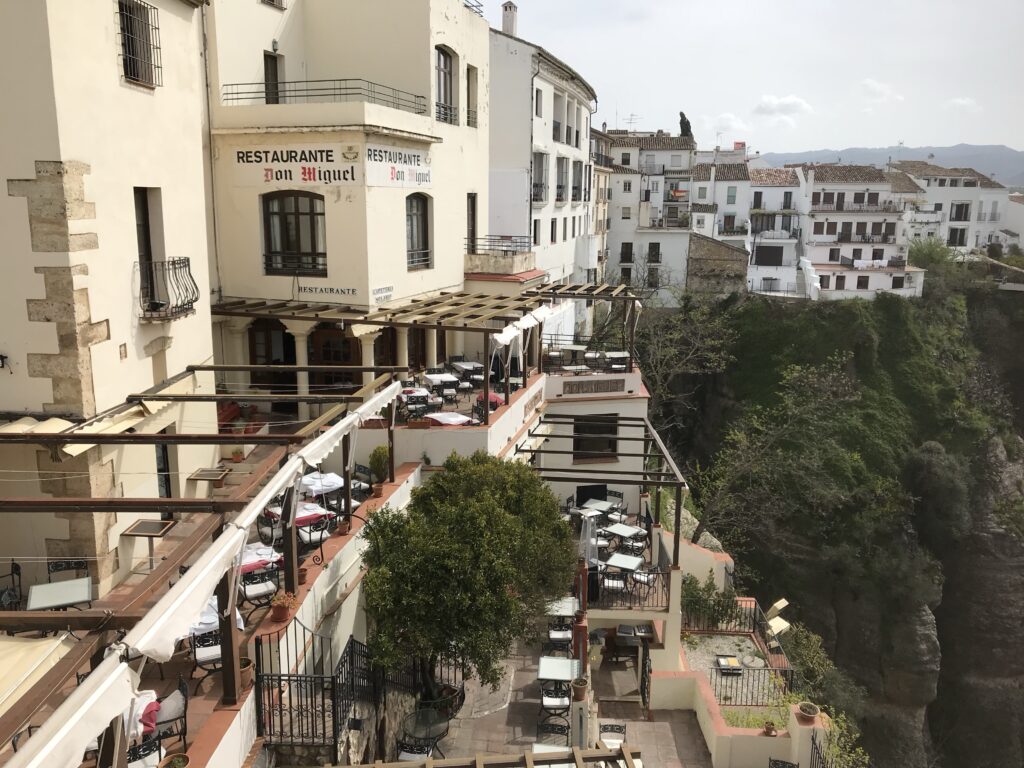
For the Animal Rights Advocate
While Ronda is known for its bullfighting tradition, an animal rights advocate might focus on:
- Plaza de Toros: One of Spain’s oldest bullrings, built in 1785. While controversial, it provides an opportunity to discuss the ethics of bullfighting12.
- Recent Protests: The advocate might be interested in recent animal rights activism in the region, such as the protests against alleged mistreatment of animals at the Malaga pound3.
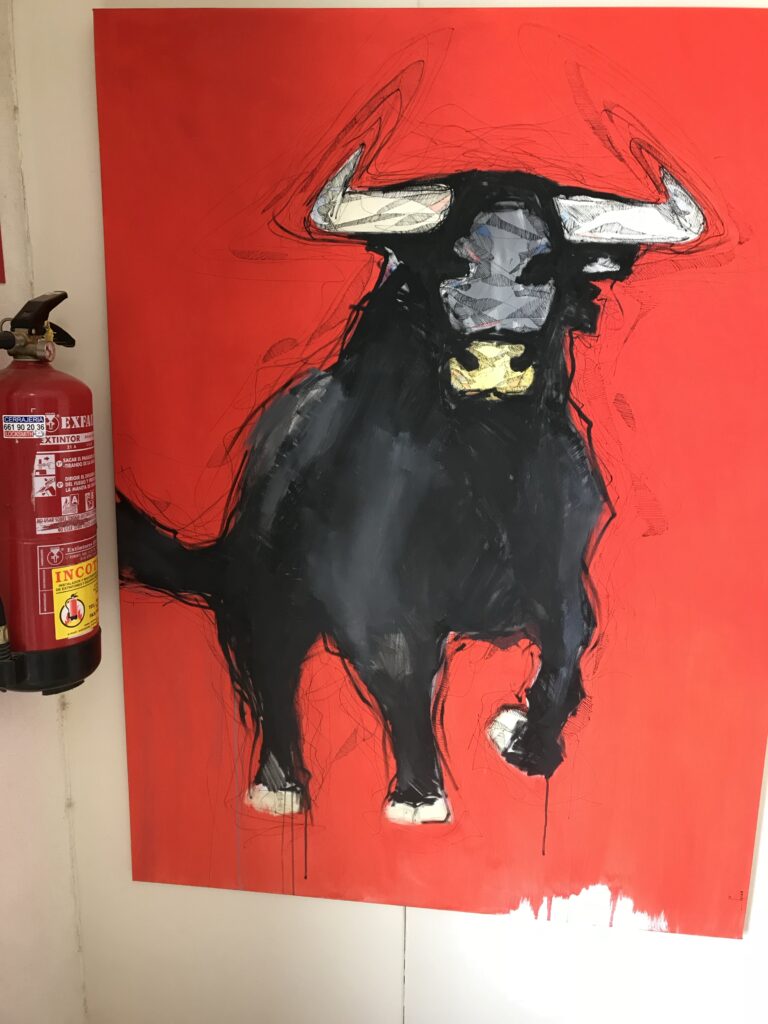
For the Architect
Ronda’s unique architecture would captivate any architect:
- Puente Nuevo: The iconic “New Bridge” spanning a 120-meter deep gorge, completed in 179325.
- Puente Viejo: The “Old Bridge” from the early 17th century, featuring a single stone arch5.
- Moorish Quarter: An entire neighborhood of beautiful buildings dating from the 9th to 15th centuries5.
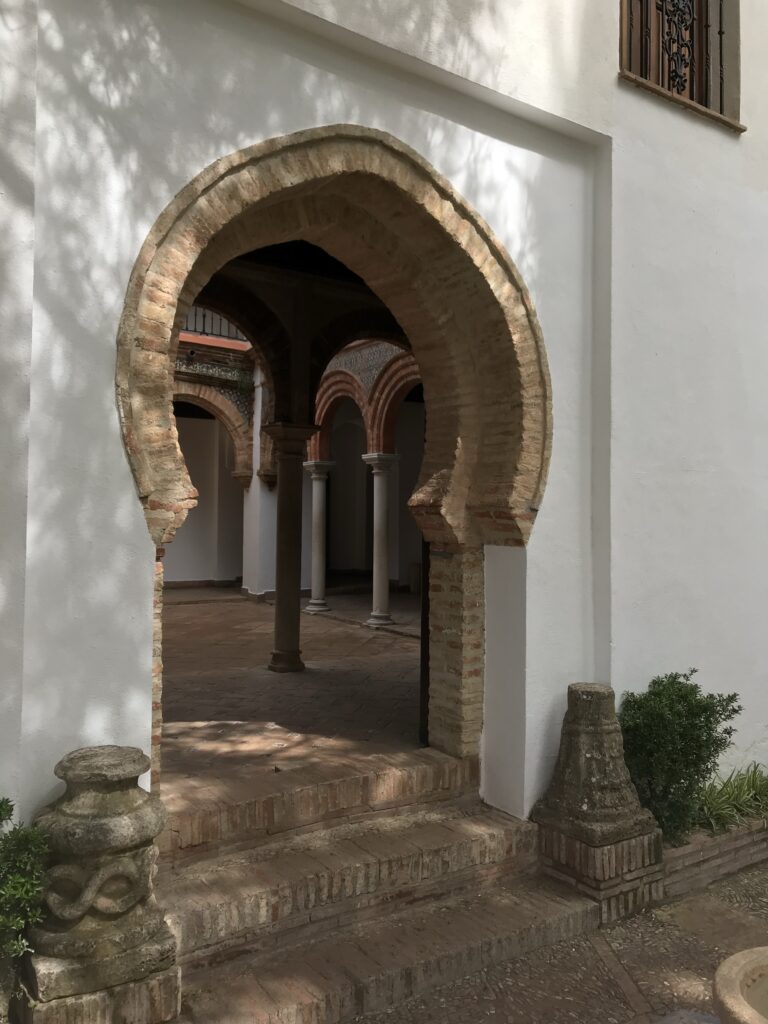
For the Writer
Ronda has long been an inspiration for writers:
- Literary History: The city has connections to famous authors like George Eliot, who named a character after the town6.
- Rainer Maria Rilke’s Room: The German poet’s preserved room at the Hotel Reina Victoria, which serves as a mini-museum6.
- Scenic Inspiration: The dramatic landscape and rich history provide ample material for creative writing6.
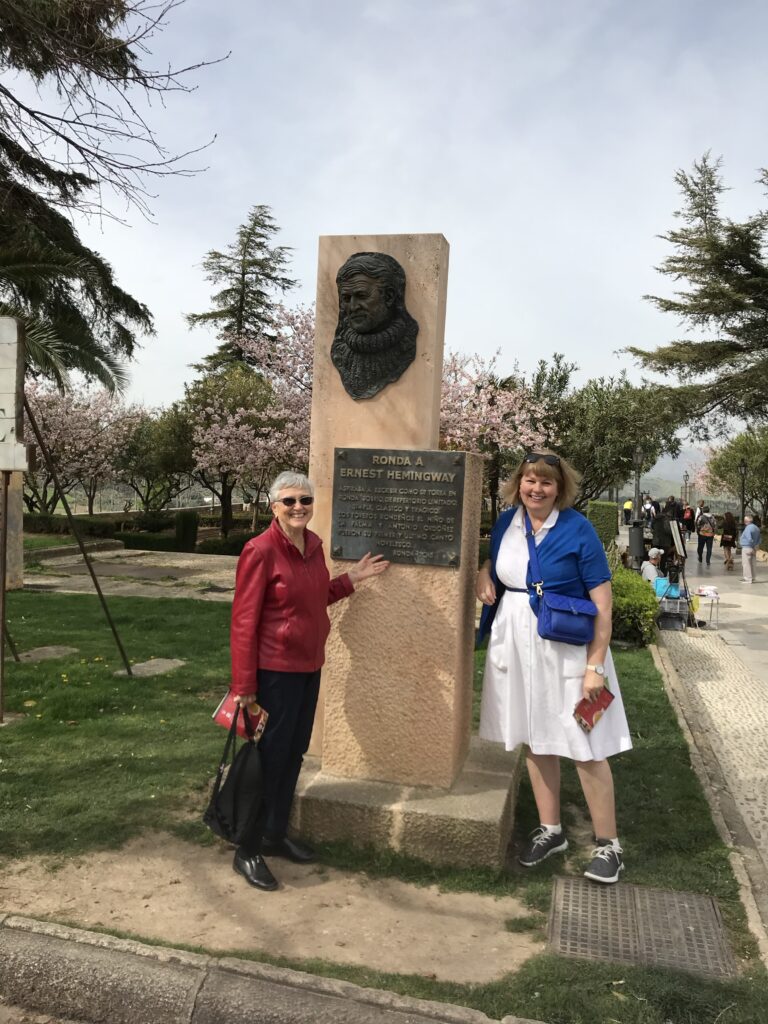
Ernest Hemingway had a deep and lasting connection to Ronda, Spain, which spanned several decades and significantly influenced his writing:
First Encounter and Inspiration
Hemingway first visited Ronda in 1923, which sparked his lifelong passion for the town1. He was immediately captivated by its spectacular location, stunning views of the Tajo gorge, and its rich bullfighting tradition12.
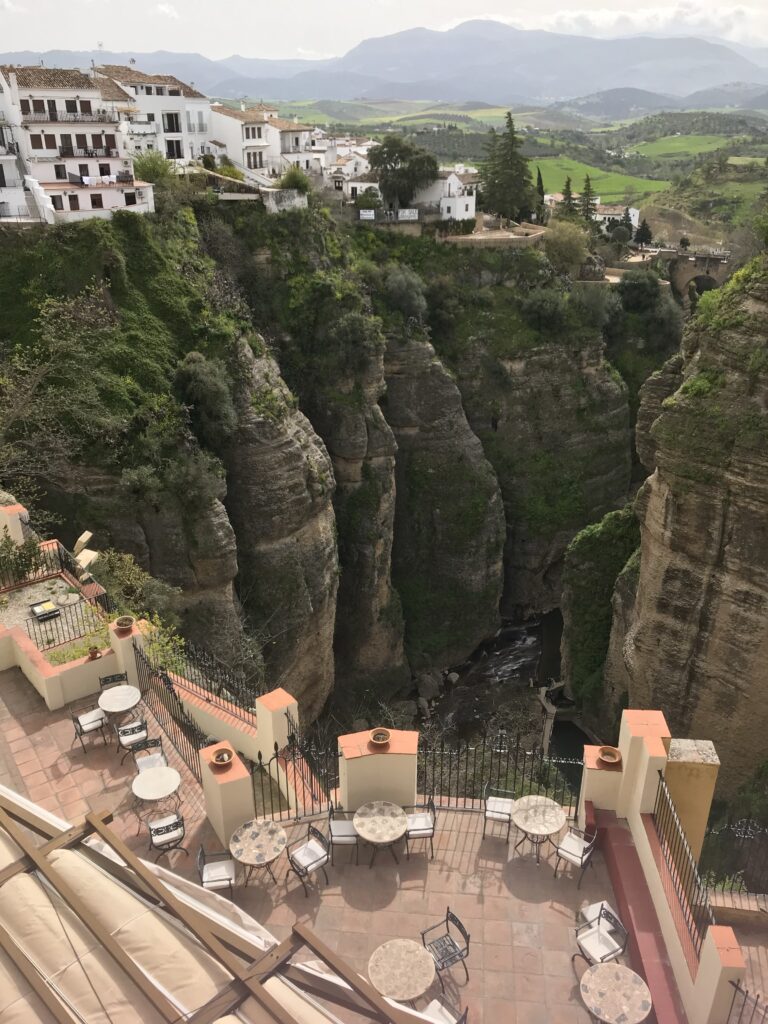
Literary Influence
Ronda inspired Hemingway to write and features prominently in several of his works:
- In “Death in the Afternoon” (1932), he praised Ronda as the ideal place to see one’s first bullfight14.
- “For Whom the Bell Tolls” (1940) includes a pivotal scene set in Ronda, though Hemingway later claimed to have fabricated the story1.
- “The Sun Also Rises” features a noble matador character inspired by Pedro Romero, a legendary Ronda torero2.
- “The Dangerous Summer” chronicles the rivalry between Luis Miguel Dominguin and Antonio Ordóñez, another famous Ronda bullfighter24.
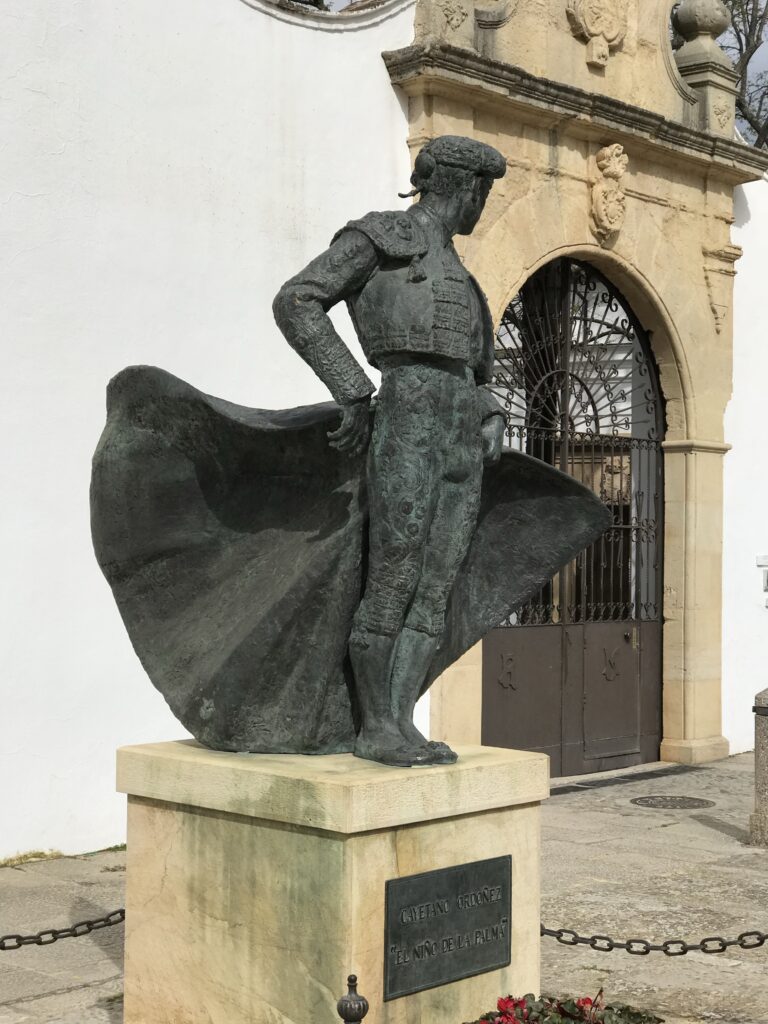
Bullfighting Connection
Hemingway developed a special bond with Ronda’s bullfighting world:
- He witnessed the Corrida Goyesca at the Plaza de Toros, one of Spain’s oldest bullrings15.
- The writer formed a close friendship with Antonio Ordóñez, a prominent Ronda matador14.
- Hemingway followed Cayetano Ordóñez, Antonio’s father, around bullrings, using him as inspiration for his writing4.
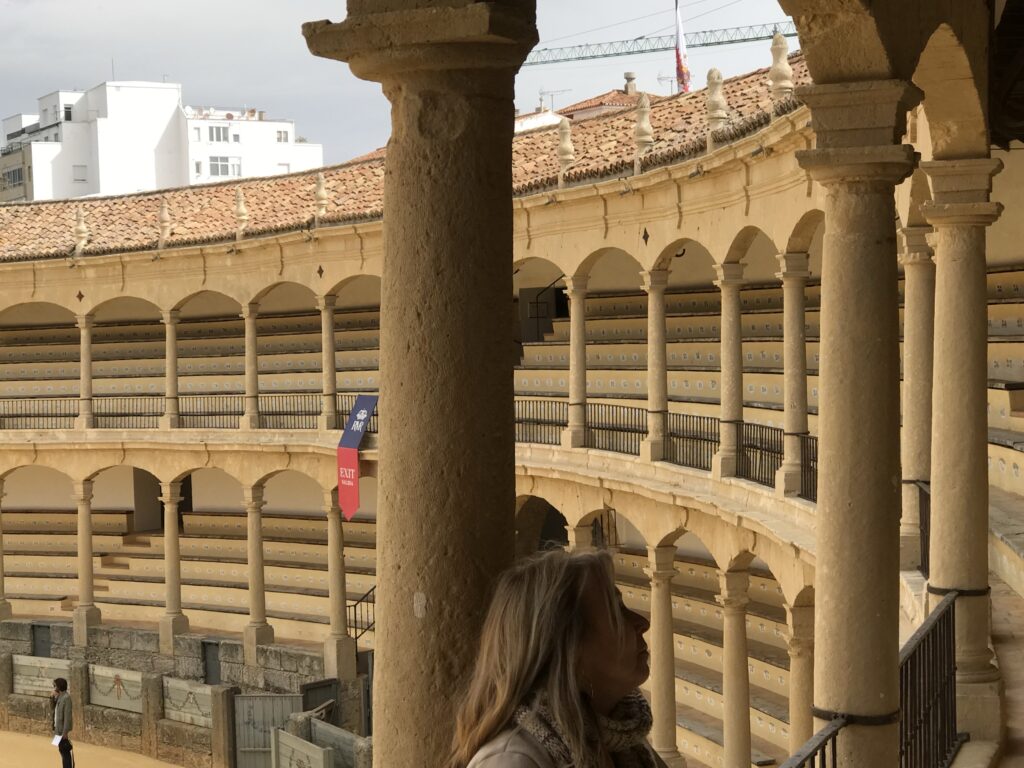
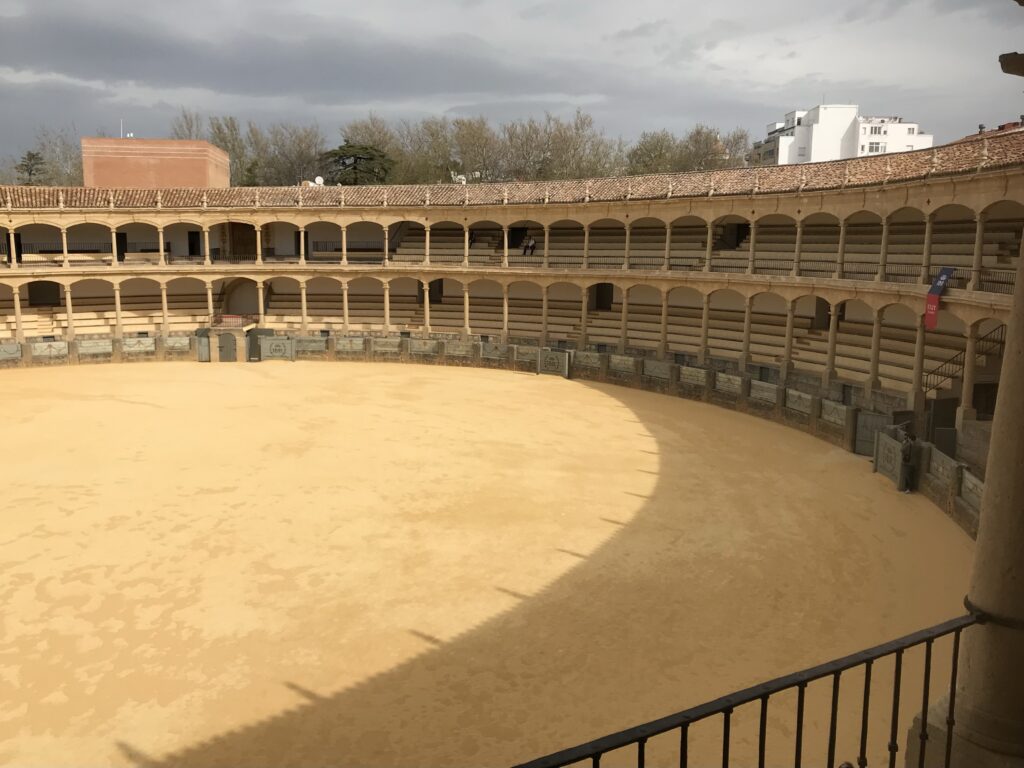
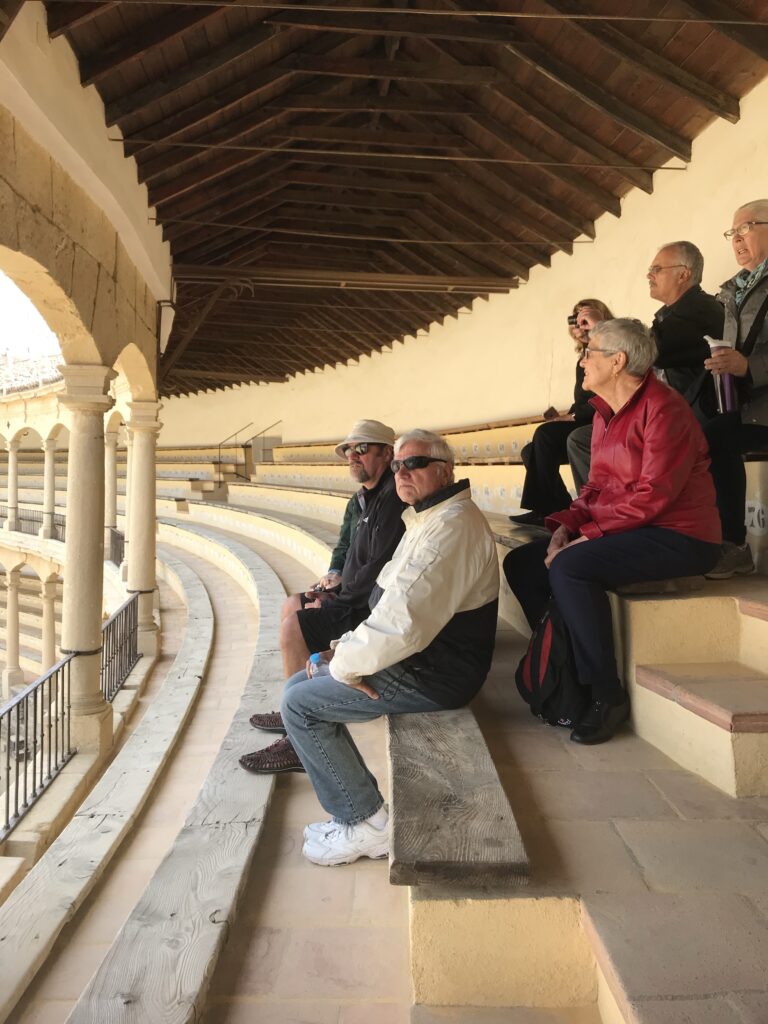
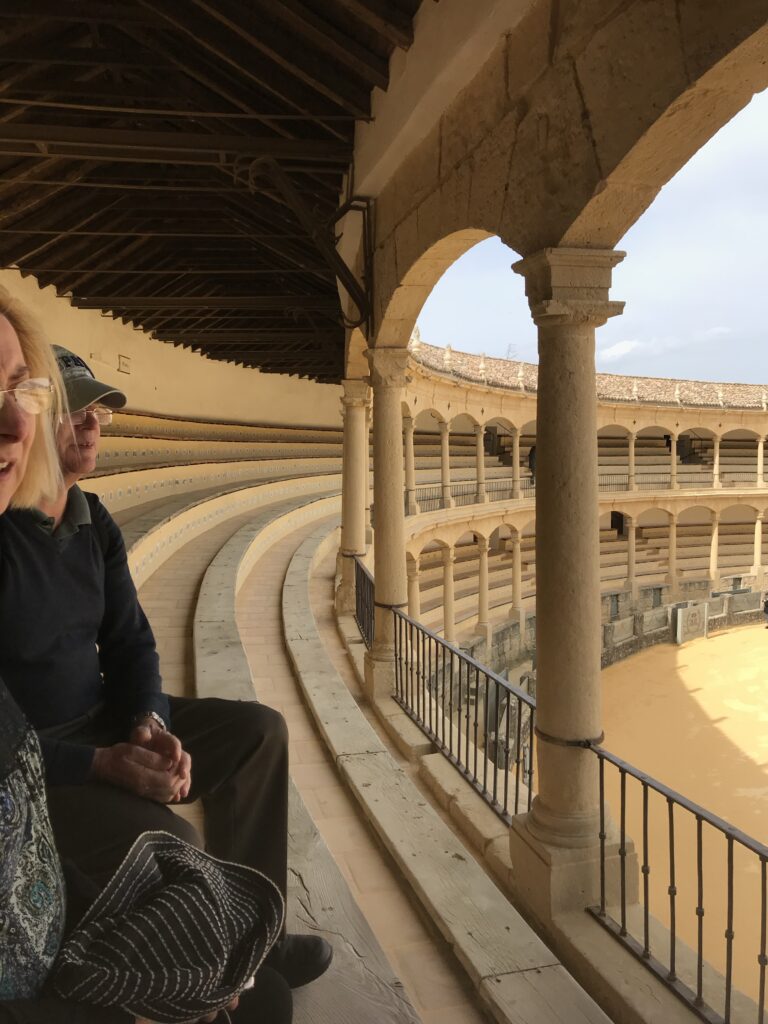
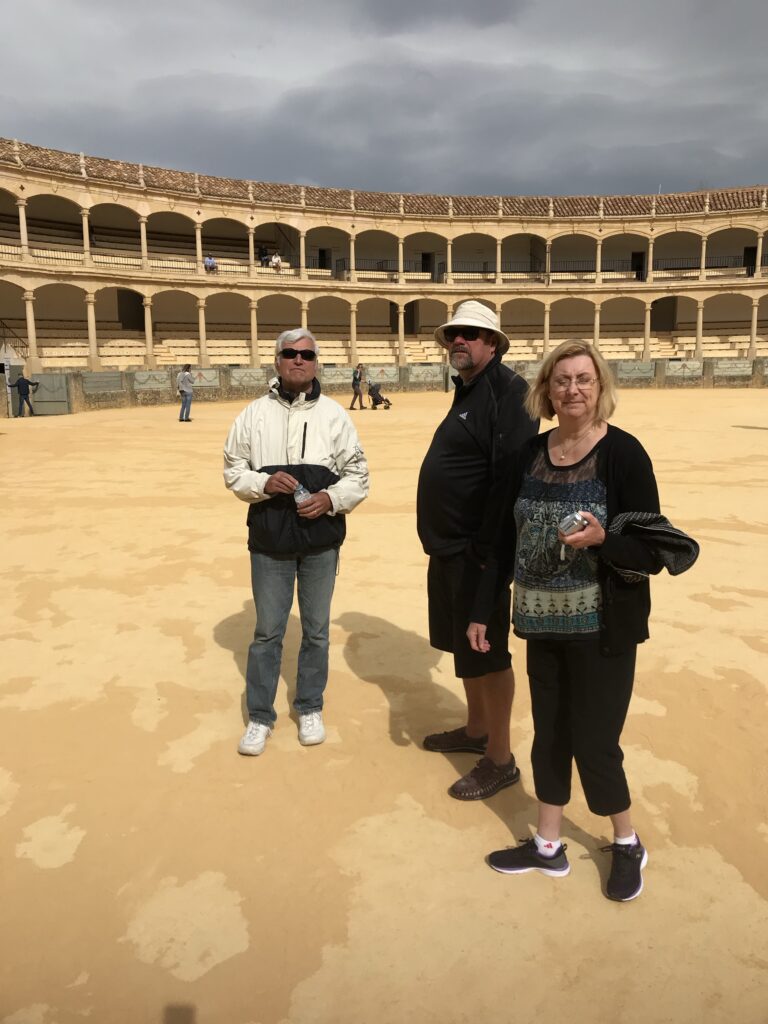
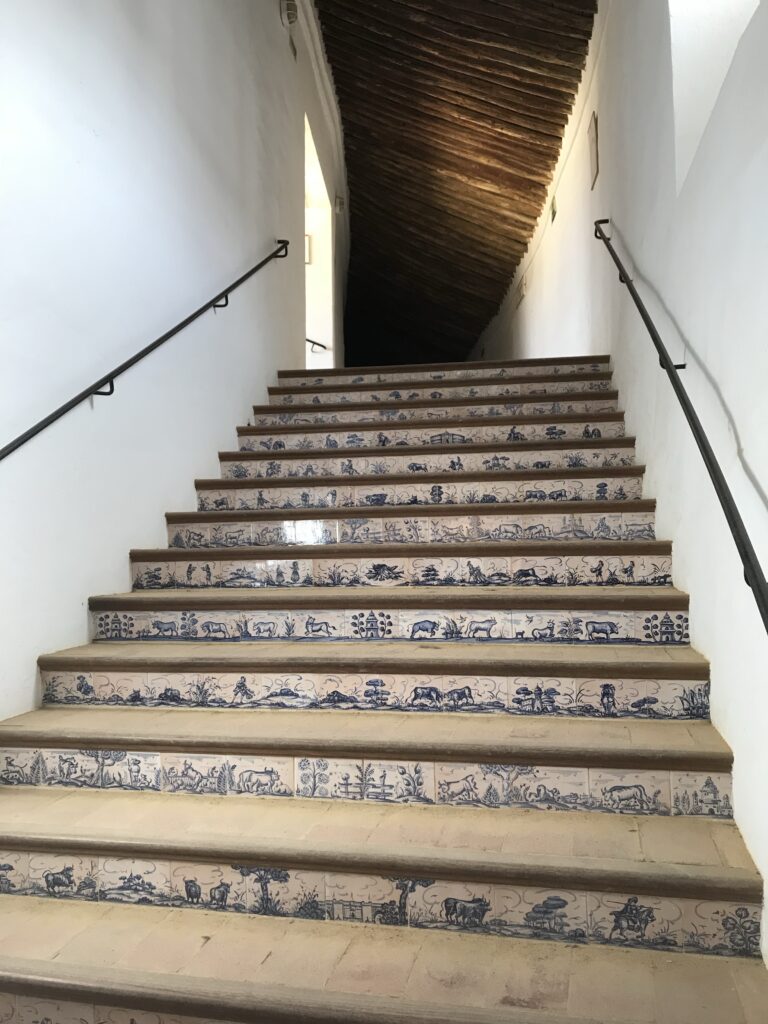
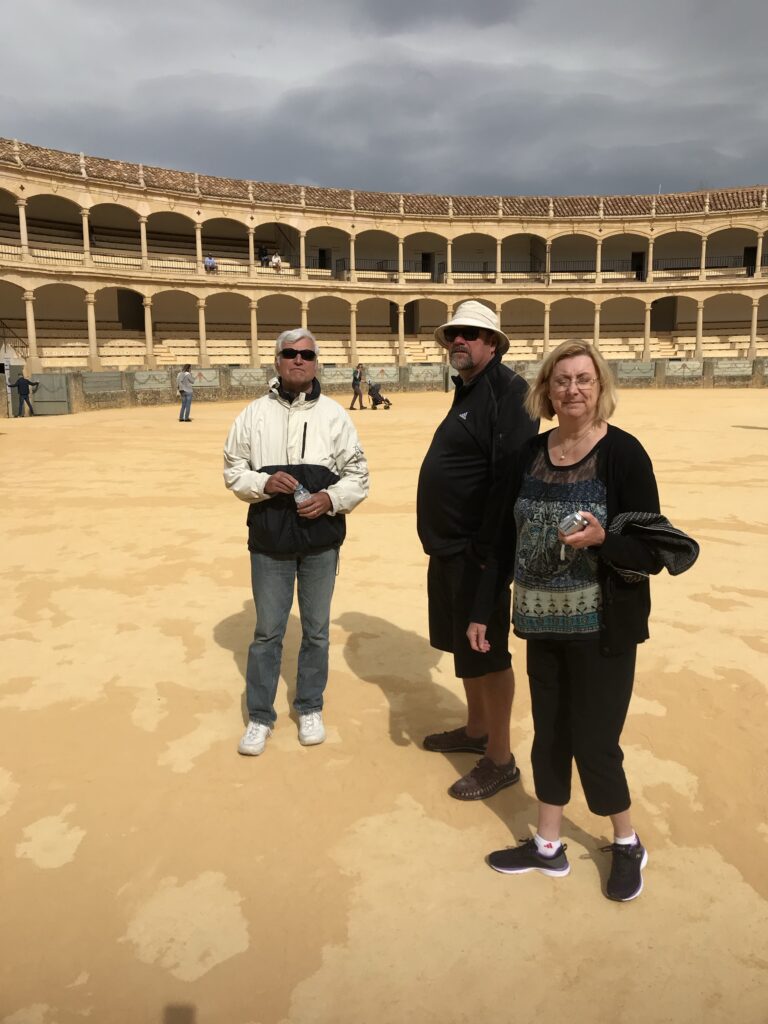
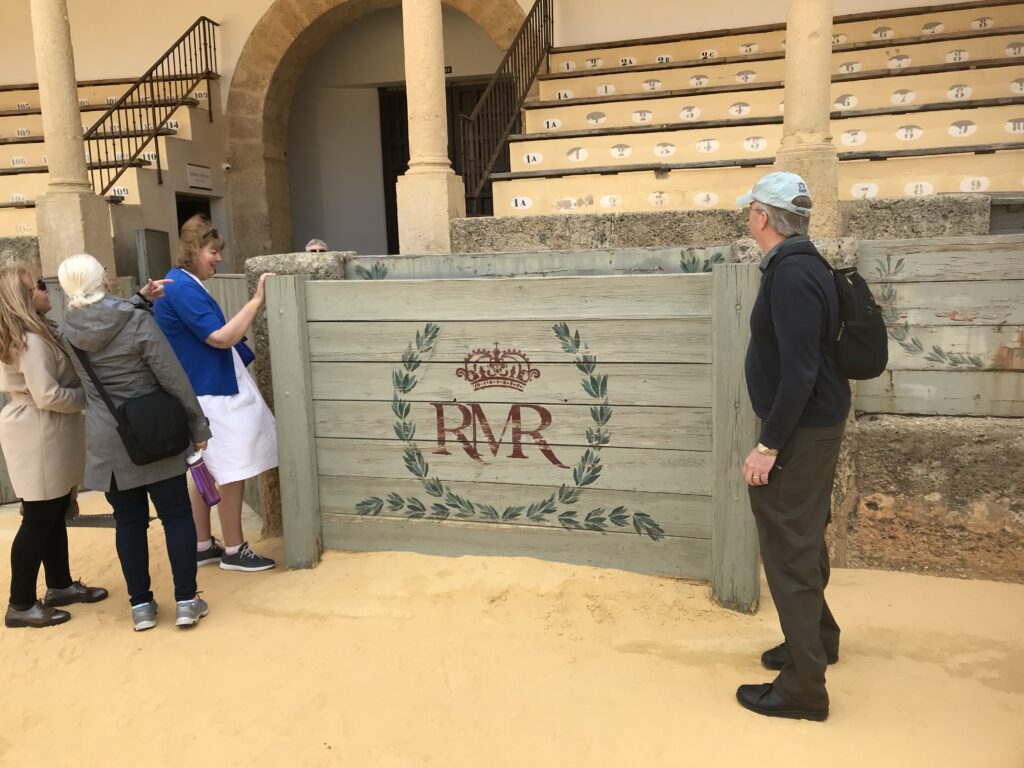
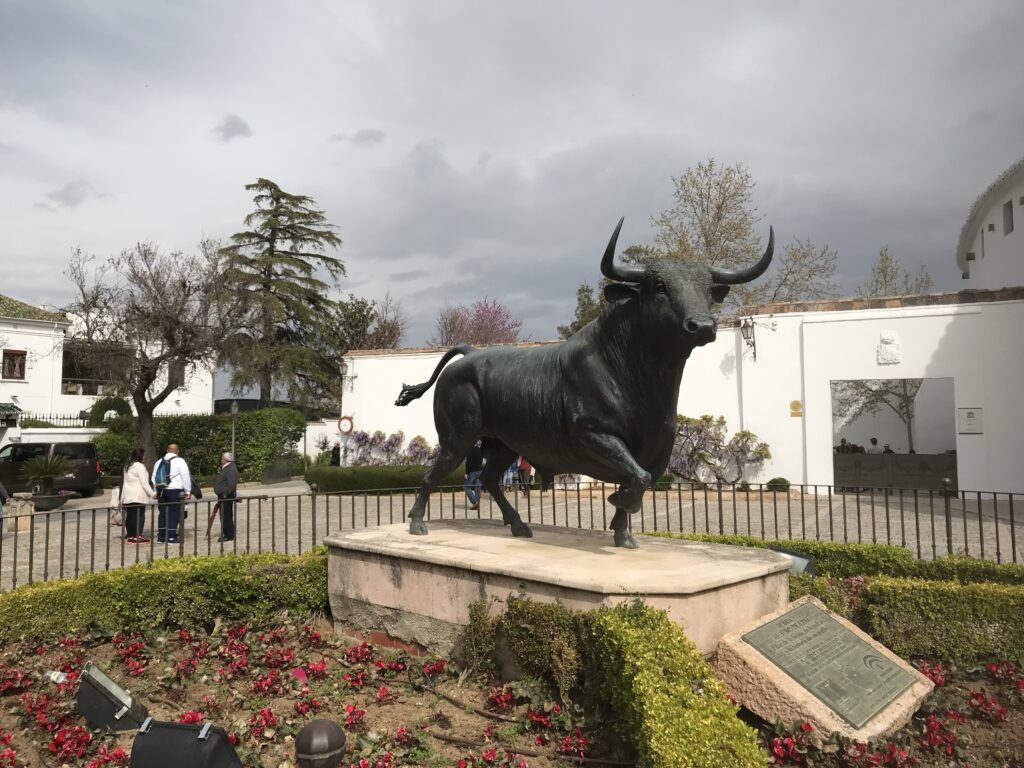
Legacy in Ronda
Despite once writing that Ronda had “nice promenades, good wine, excellent food and nothing to do,” Hemingway’s connection to the town is celebrated:
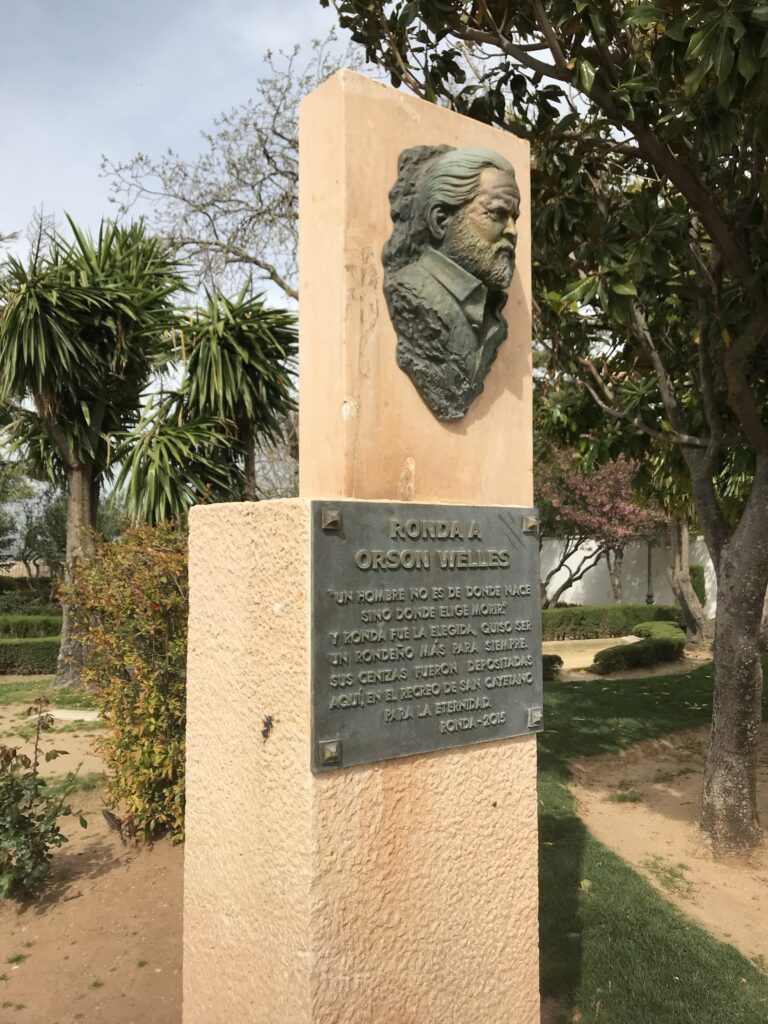
- A pathway named Paseo de E. Hemingway honors the writer12.
- A bronze sculpture of Hemingway stands in Plaza Blas Infante, near the bullring1.
Hemingway’s relationship with Ronda spanned nearly four decades, from his first visit in 1923 to his last in 1959 while working on “The Dangerous Summer”14. His writings helped popularize Ronda and its bullfighting tradition, cementing the town’s place in literary history.
For the Engineer
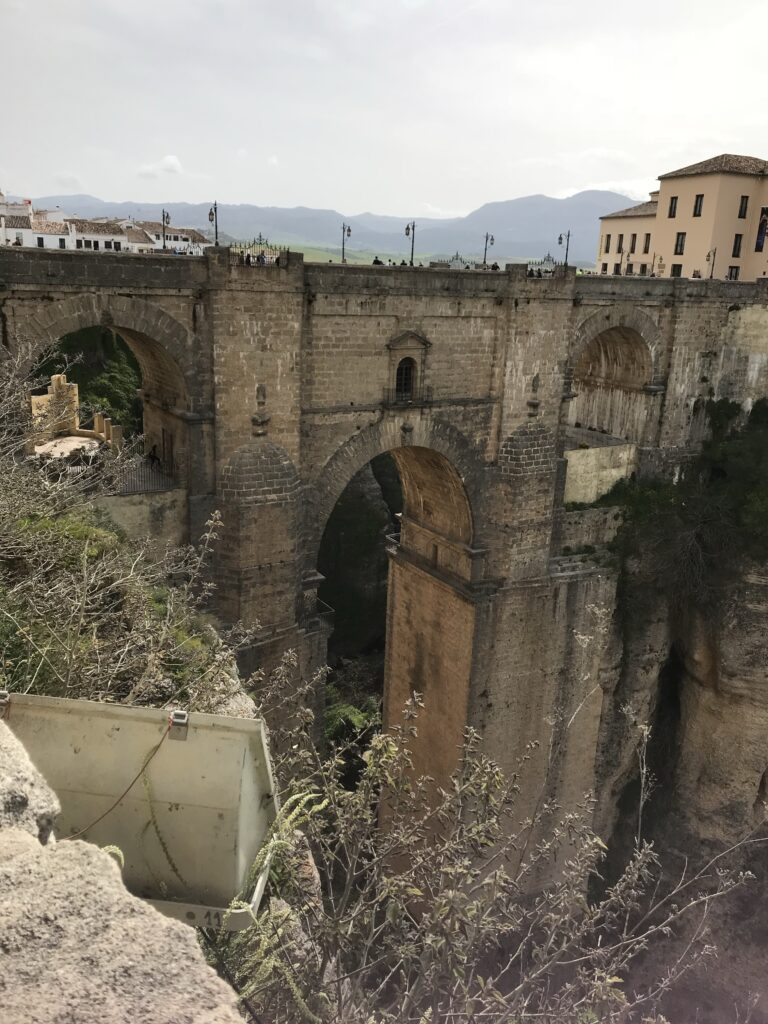
An engineer would be intrigued by:
- Puente Nuevo: The construction of this bridge, which took nearly 40 years and involved significant engineering challenges5.
- Ancient Water Systems: The water management systems at Casa del Rey Moro, including the “Water Stair”1.
For the Birder
While specific birding information wasn’t provided, a birder might enjoy:
- El Tajo Gorge: The deep canyon that cuts through the city, which likely provides habitat for various bird species25.
- Surrounding Countryside: The picturesque landscapes around Ronda, which may offer diverse birdwatching opportunities.
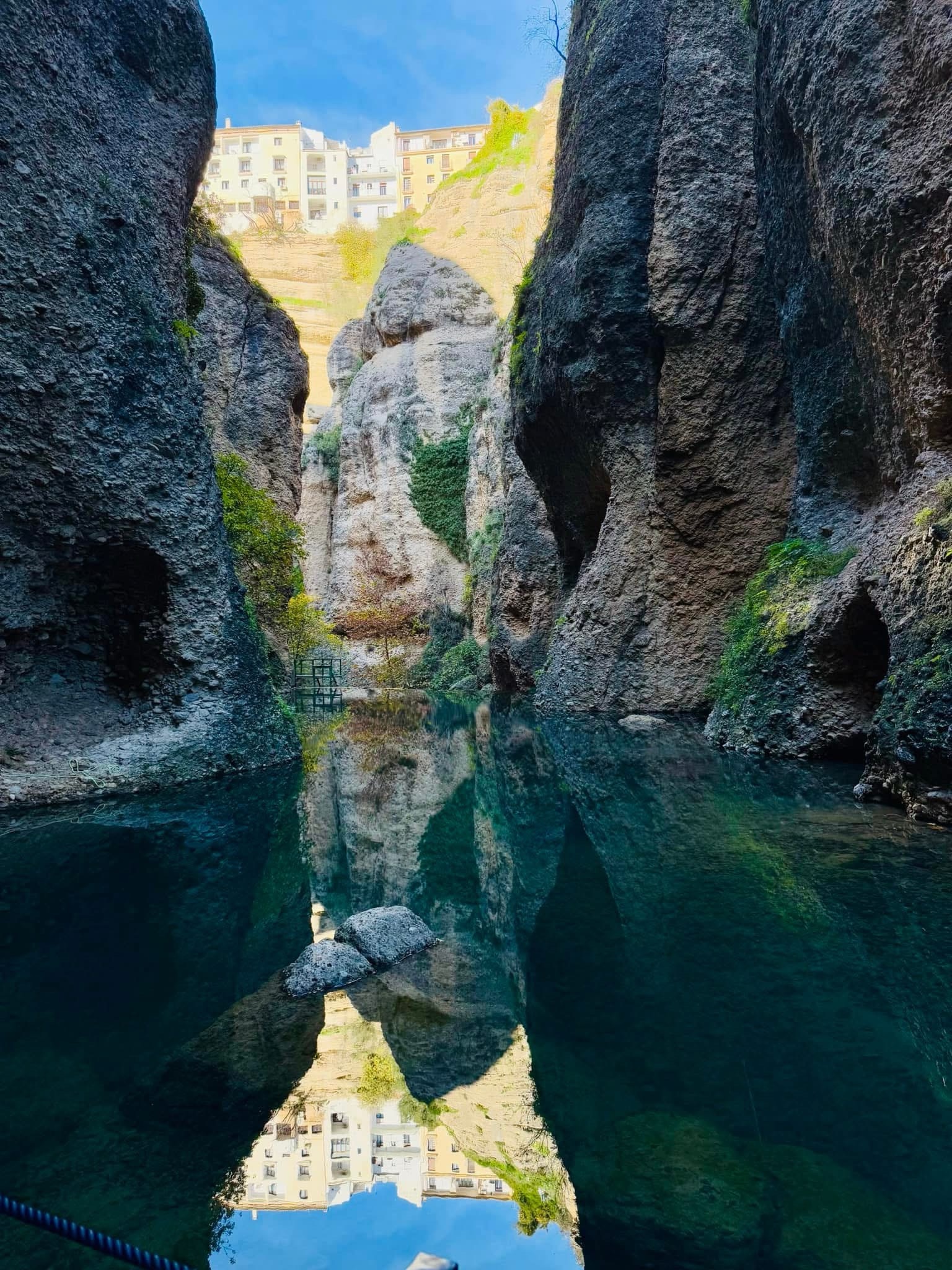
For the Archaeologist
An archaeologist would find plenty to explore:
- Prehistoric Settlements: Evidence of Neolithic settlements in the area2.
- Roman Origins: The town’s Roman foundations, dating back to the Second Punic War2.
- Baños Árabes: Well-preserved 13th-century Arab baths, an important archaeological site1.
- City Walls and Gates: Remnants of the town’s defensive structures, some dating back to the Islamic era2.
Acinipo is an ancient archaeological site located approximately 20 kilometers from Ronda in the Spanish province of Málaga. This historic settlement has a rich and layered past:
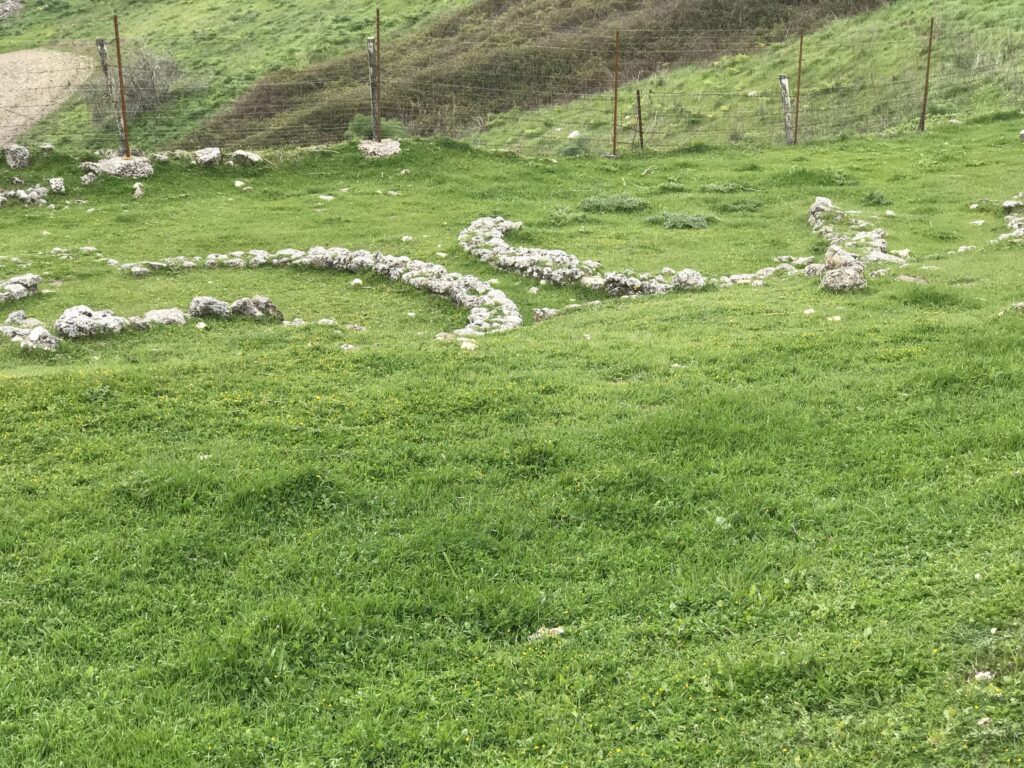
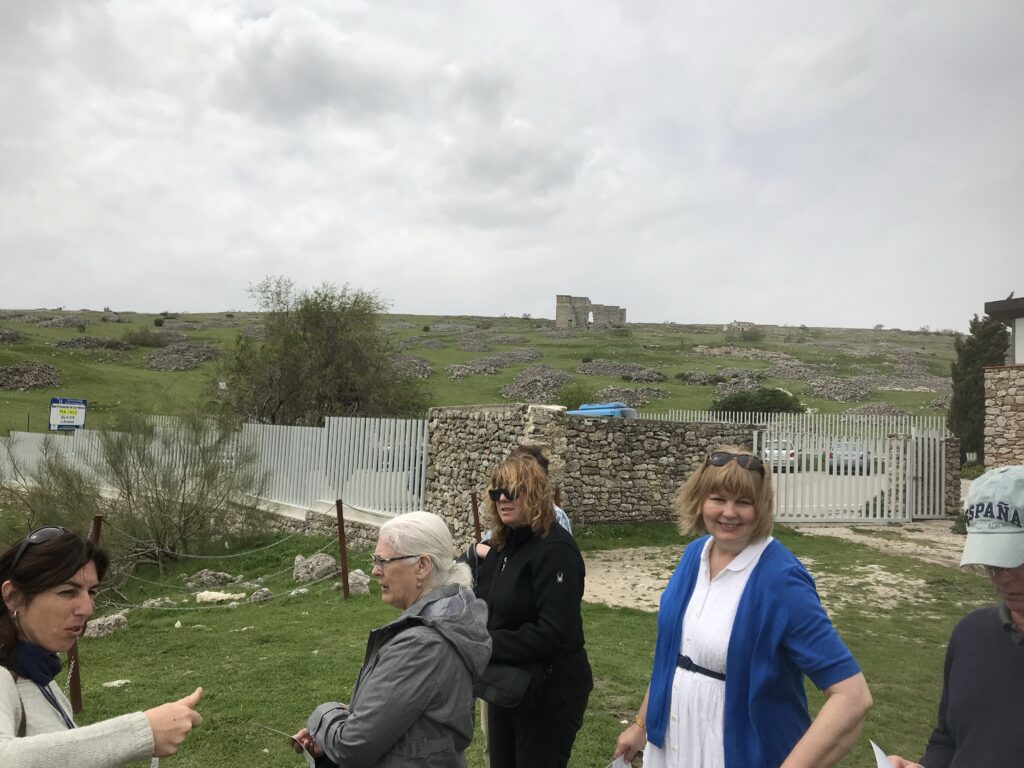
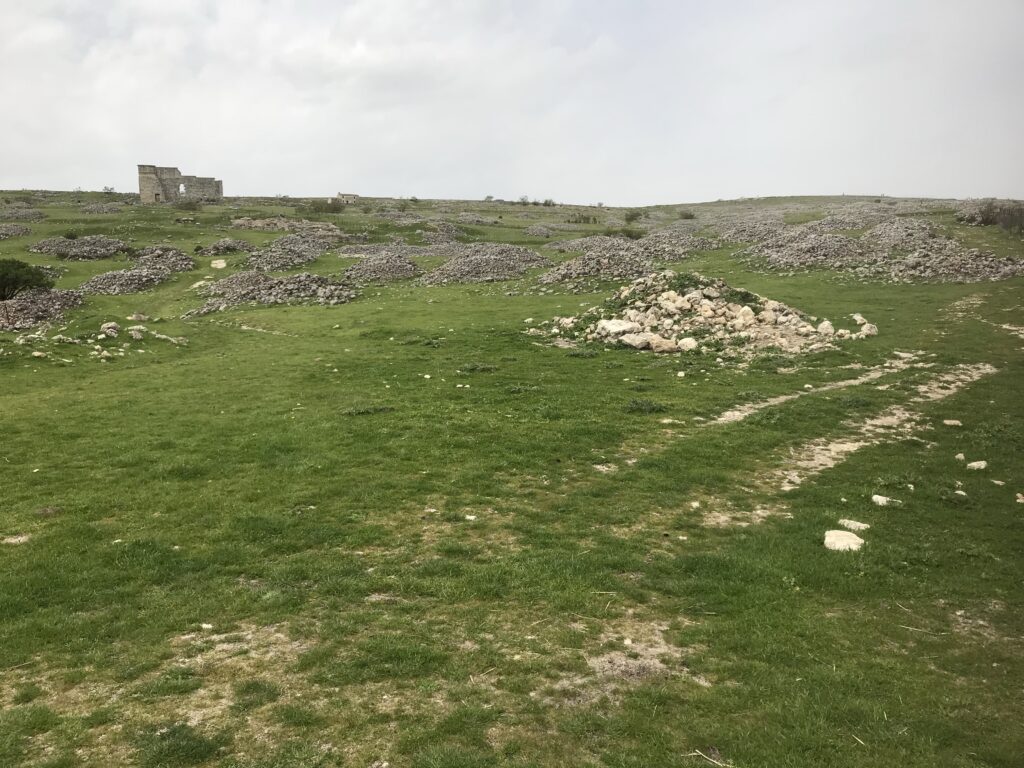
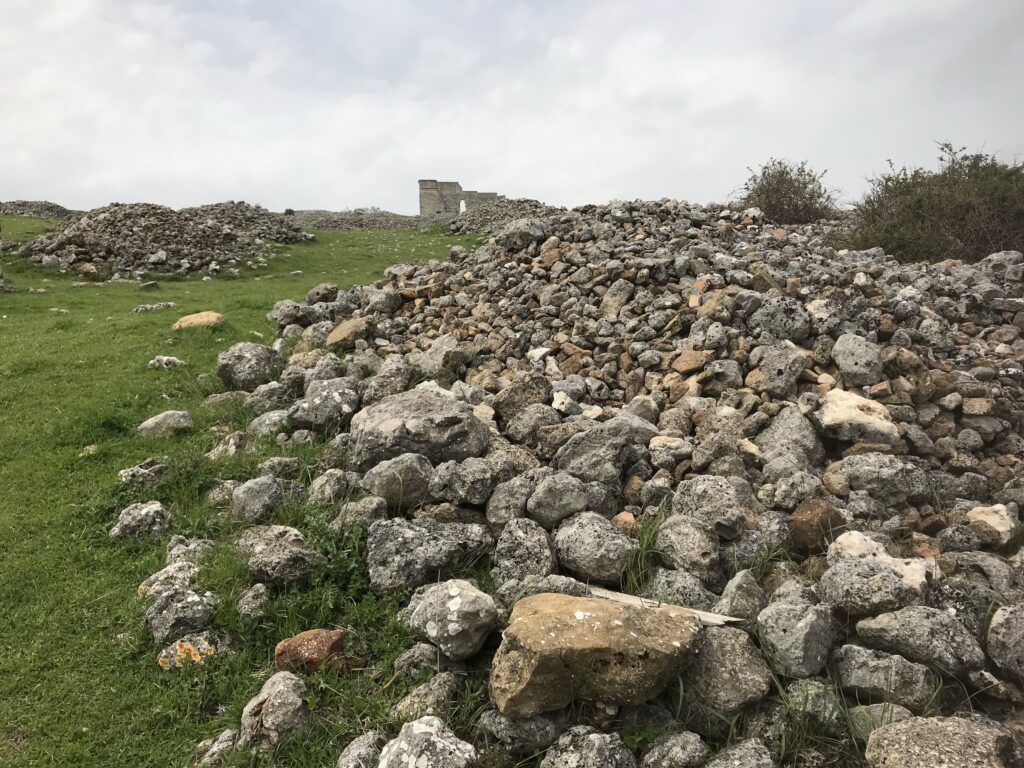
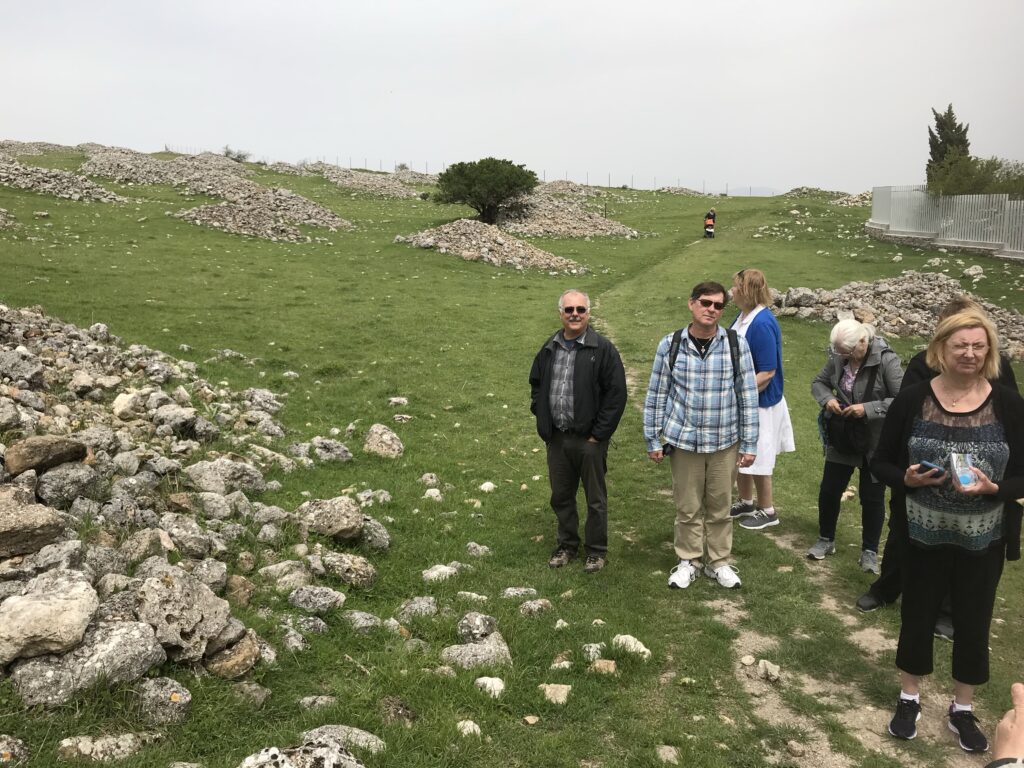
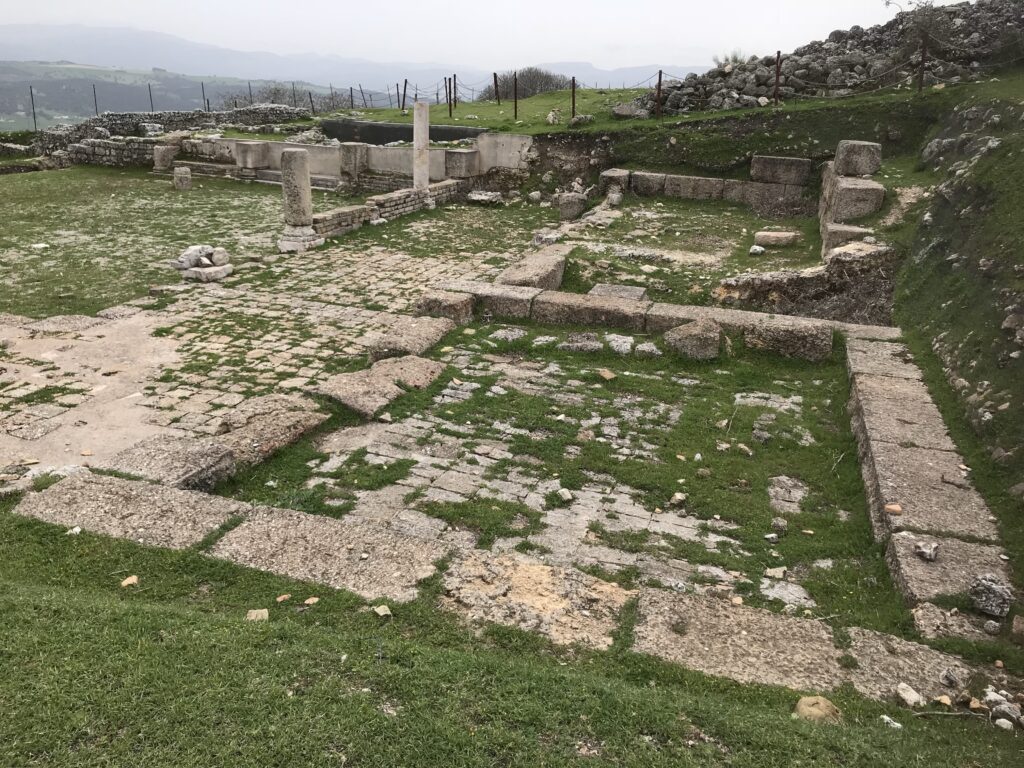
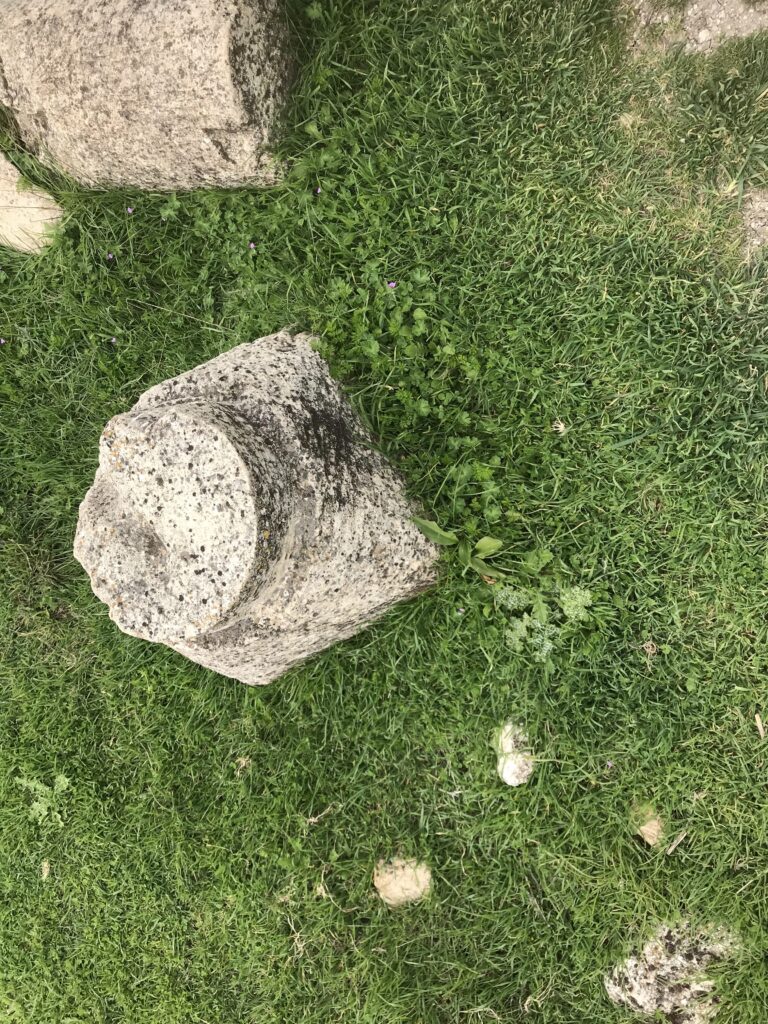
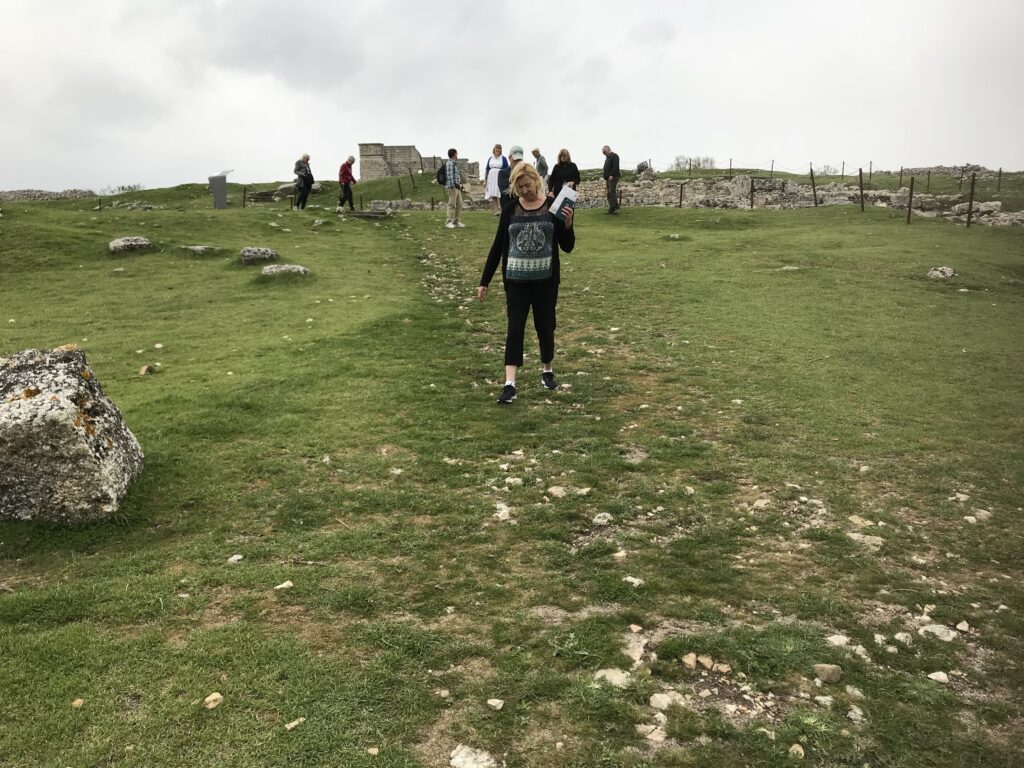
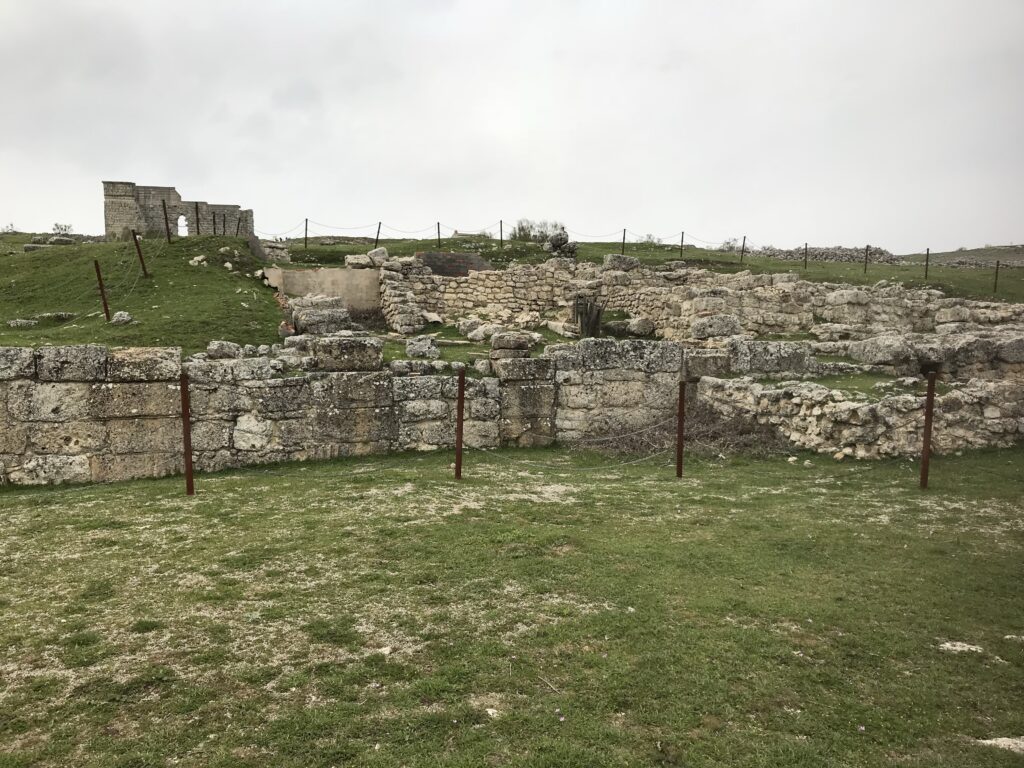
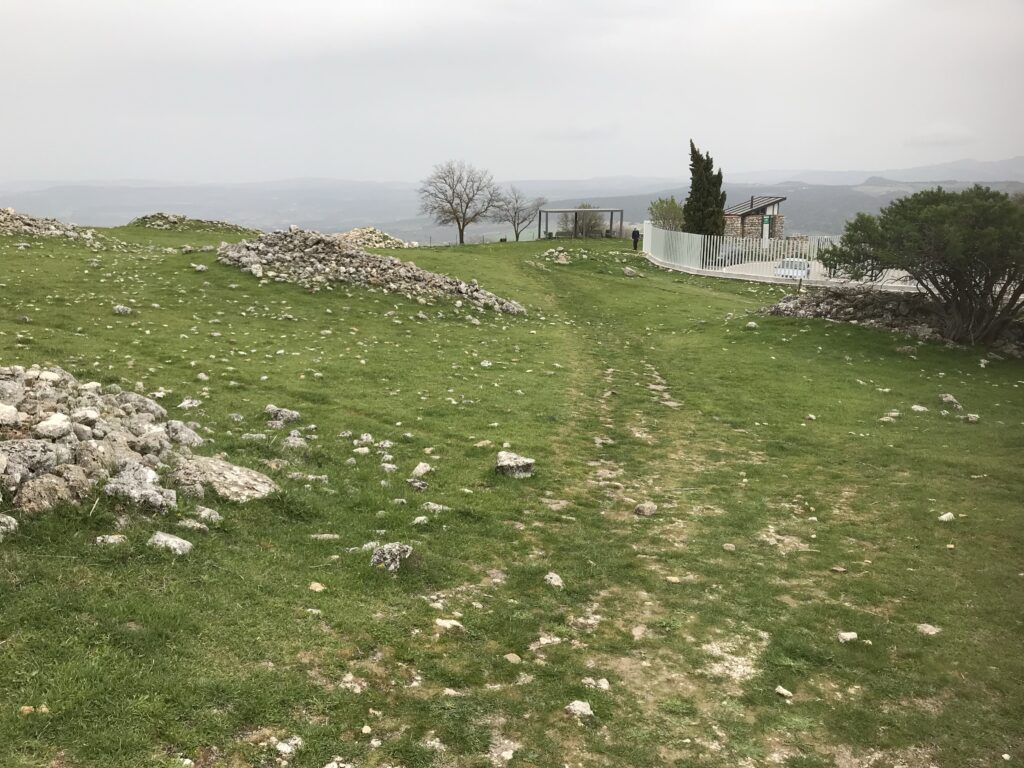
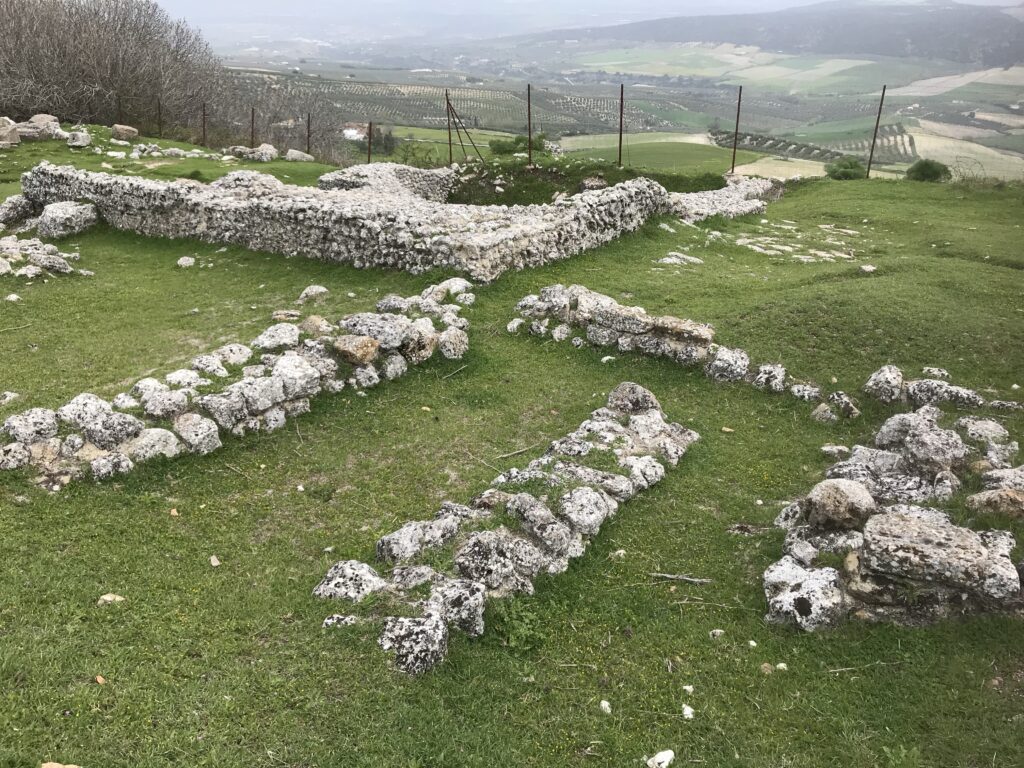
Origins and Early History
- The site’s history predates Roman occupation, with evidence of human settlements dating back to the Neolithic period3.
- Prehistoric ruins from the 9th century BC have been discovered, including the remains of a typical village from that era6.
Roman Era
- Acinipo flourished as a Roman city, reaching its peak in the 1st century AD12.
- It was founded around 45 BC, possibly after the Battle of Munda, as a settlement for retired veterans of Julius Caesar’s legions14.
- At its height, Acinipo had a population of about 5,000 residents12.
Key Features
- The city was strategically located at an elevation of 999-1,000 meters above sea level25.
- Acinipo minted its own coins between 56-53 BC, indicating its importance and relative autonomy12.
- The site boasts well-preserved ruins, including:
Decline and Rediscovery
- Acinipo began to decline from the 3rd century AD and was eventually abandoned in favor of Arunda (modern-day Ronda)46.
- The city fell in 429 AD5.
- Today, Acinipo is sometimes referred to as “Ronda la Vieja” (Old Ronda), although it coexisted with Arunda for centuries4.
Acinipo offers visitors a glimpse into ancient Iberian and Roman history, with its impressive ruins and panoramic views making it a significant archaeological site in southern Spain.
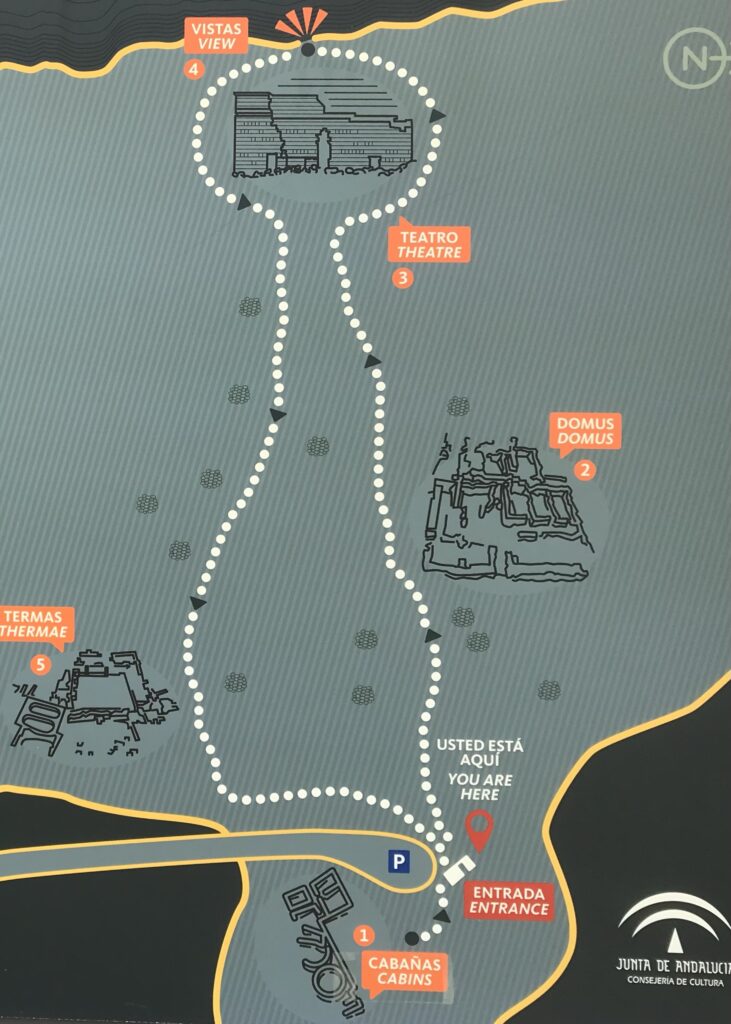
The route starts with the PROTOHISTORIC CABINS , which are the oldest buildings that can currently be seen in Acinipo, dated from the IX-VIII centuries B.C.
Beginning the ascending path we find the ‘DOMUS’ , Roman lordly house that after being abandoned, became a handcrafted workshop, which is partially excavated.
Carrying on upwards, we reach the monumental ROMAN THEATRE , the main building of Acinipo. It is one of the oldest of Spain, built in the middle of the first century B.C. It stands out for its cavea’ (seating section) carved into the rock.
If we continue to the edge of the plateau, we can view the splendid PANORAMIC VIEW with the mountains of Ronda and Grazalema as backdrop.
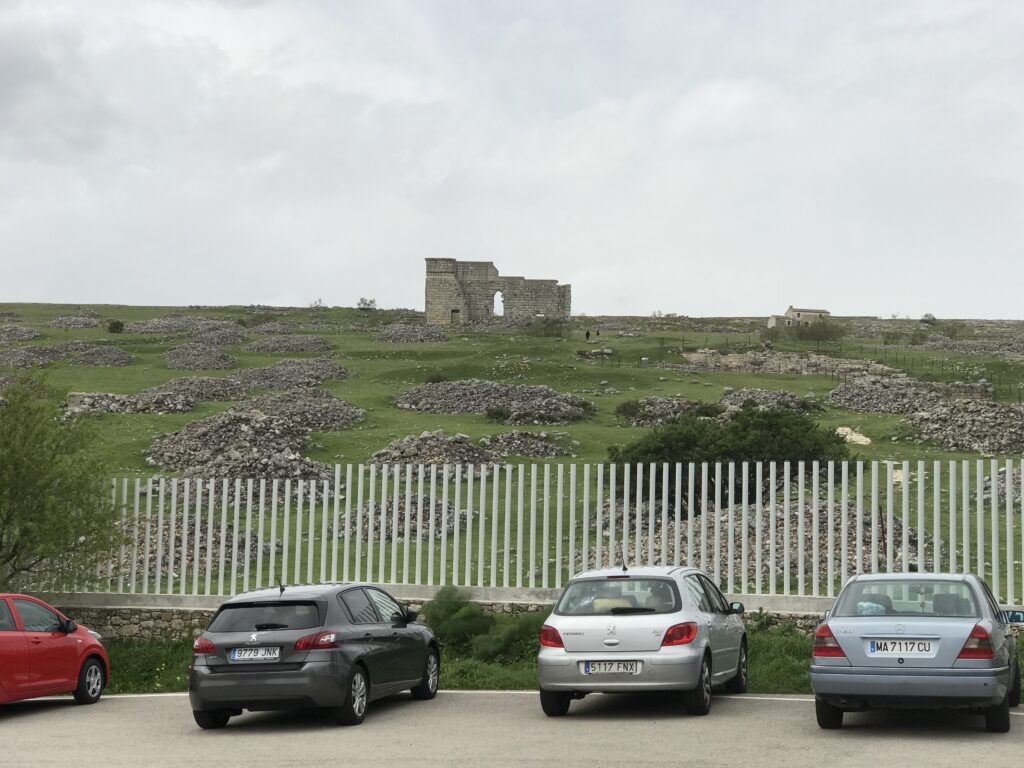
Descending towards the exit, we can stop at the ‘THERMAE” (Roman baths) 6 which, equipped with a ‘palaestra’ (rectangular courtyard), allowed to combine the bathwith sports training.

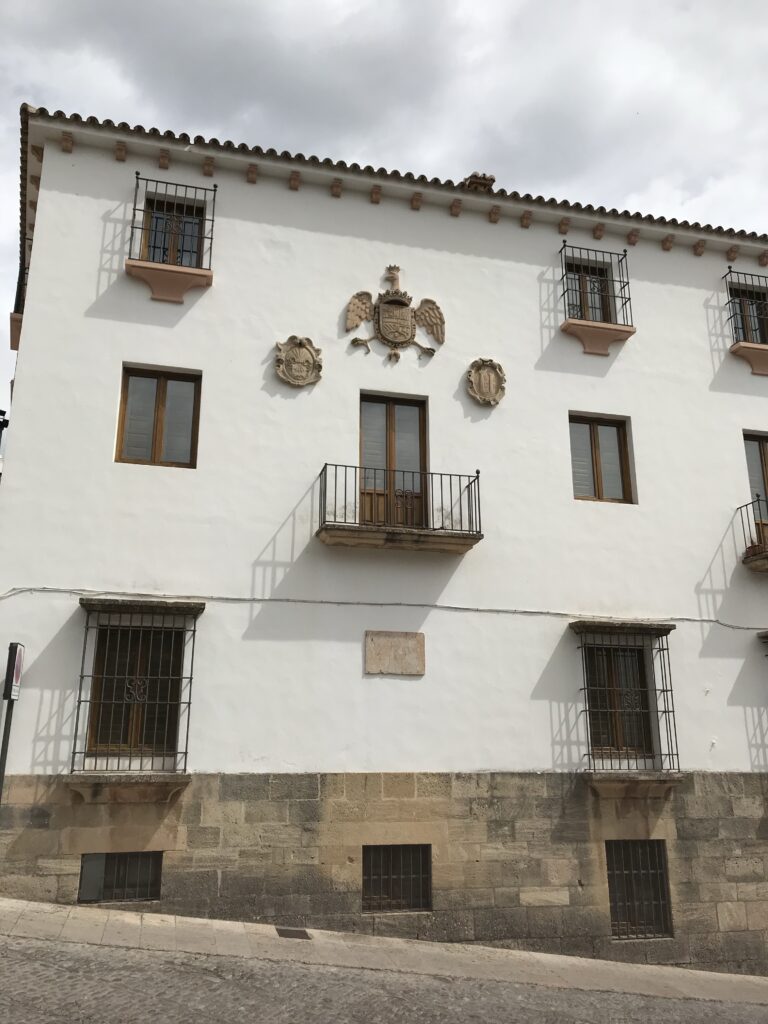



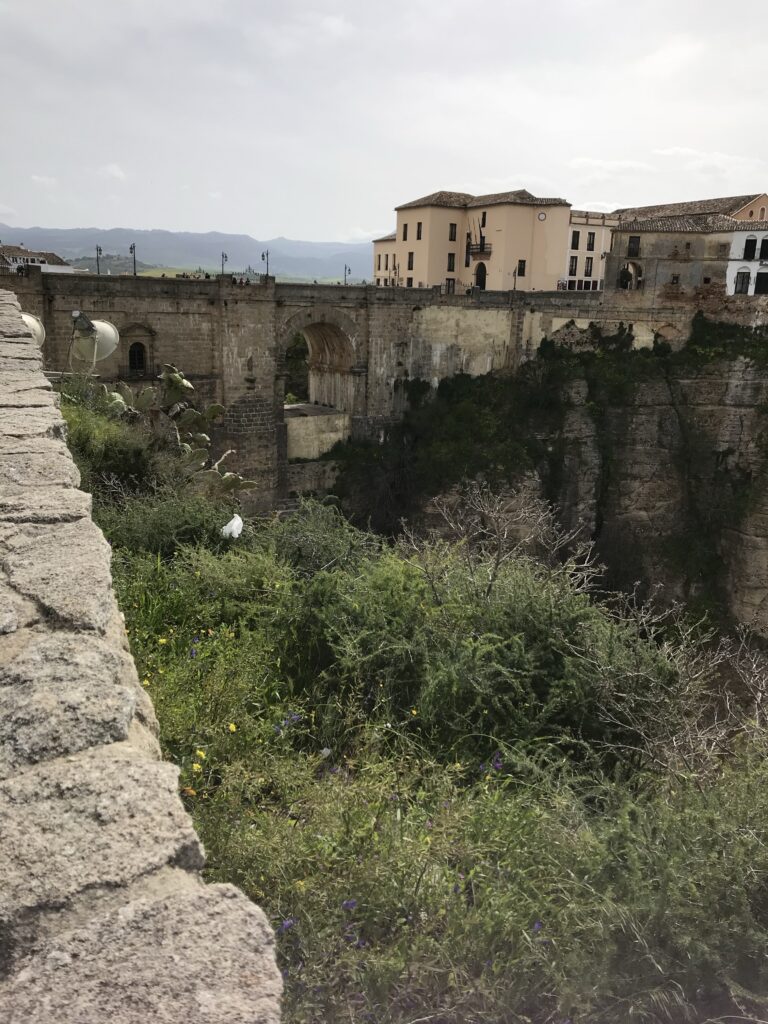




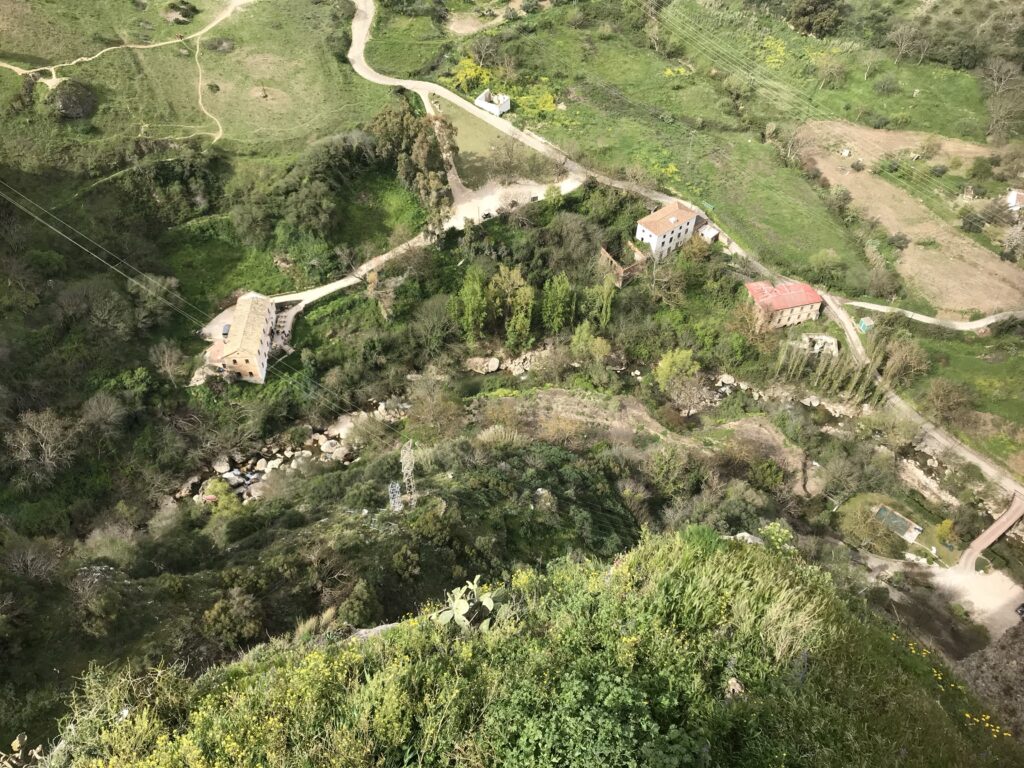
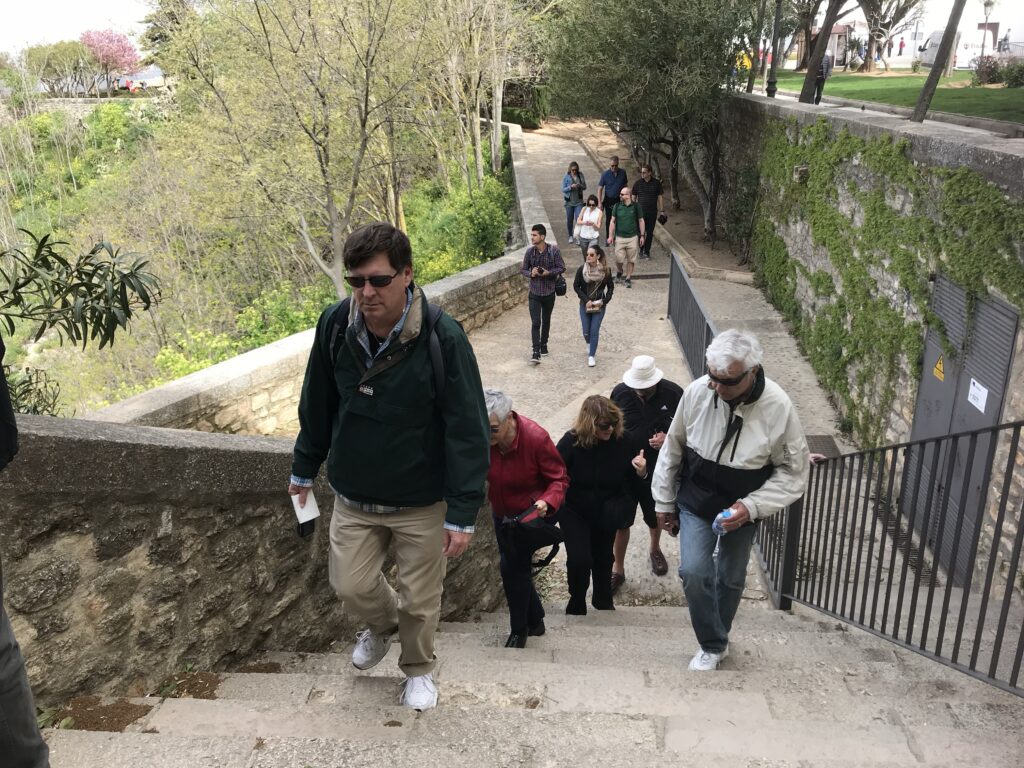




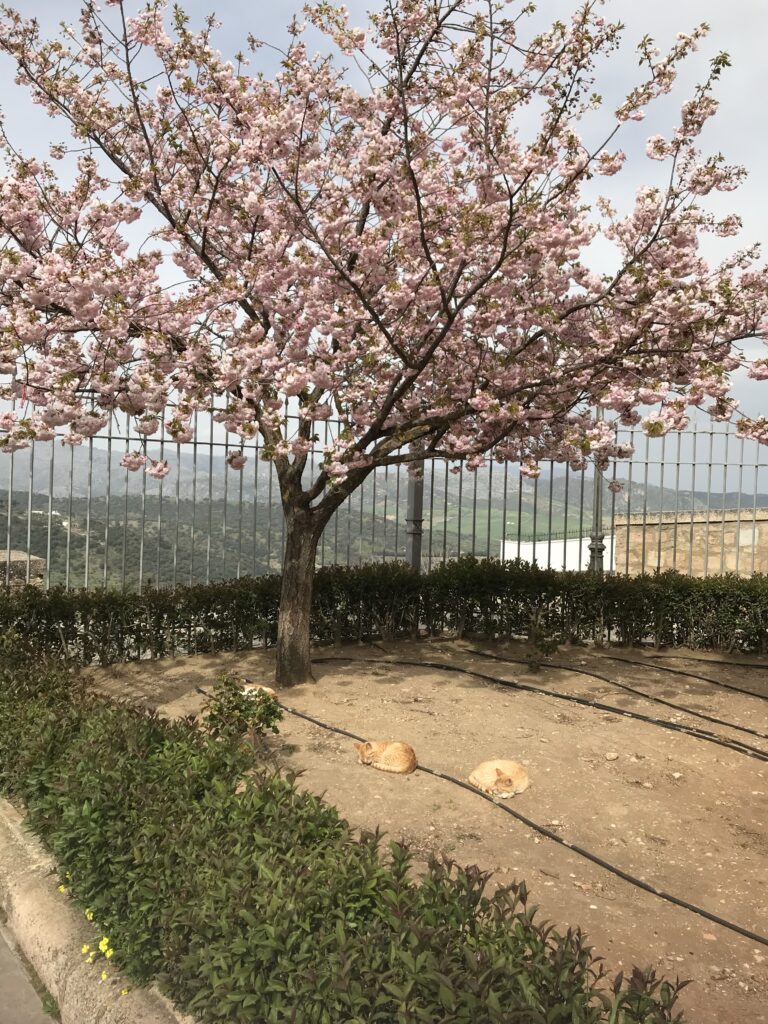
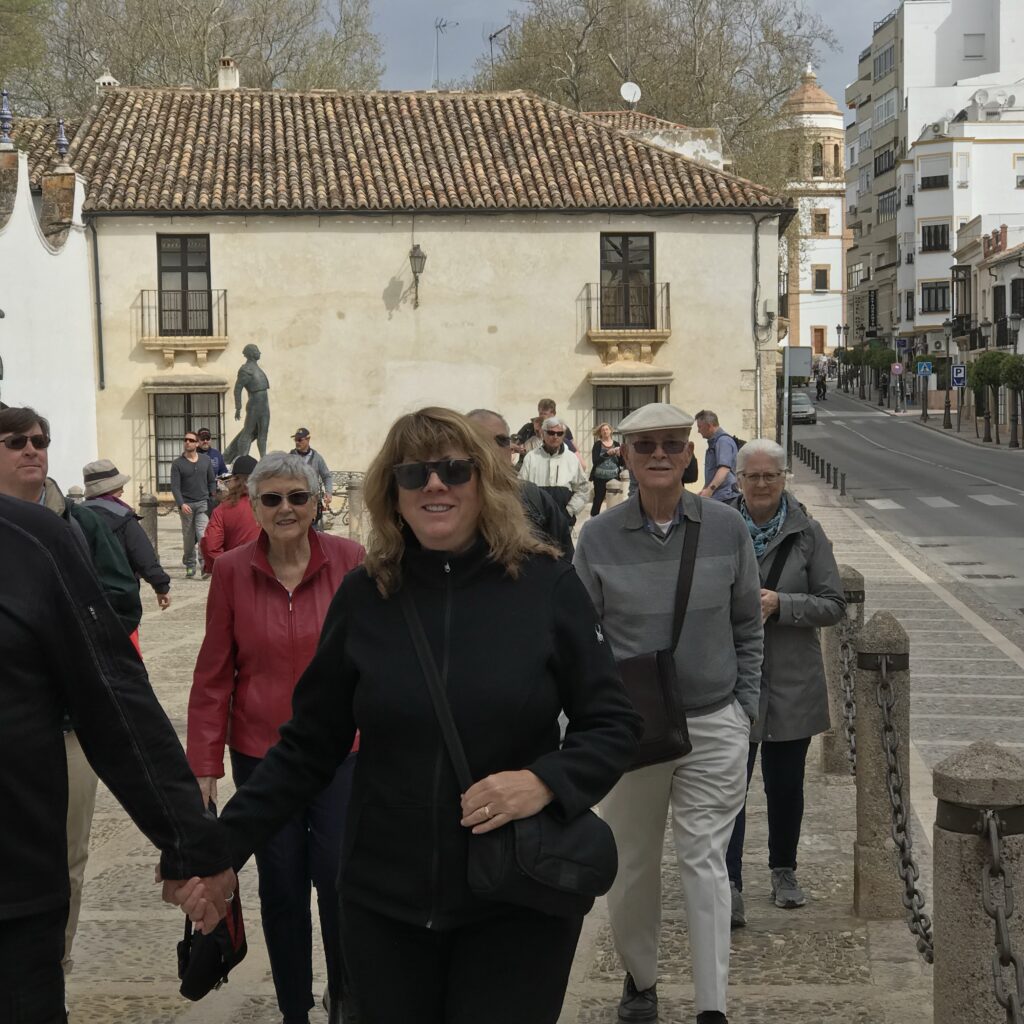

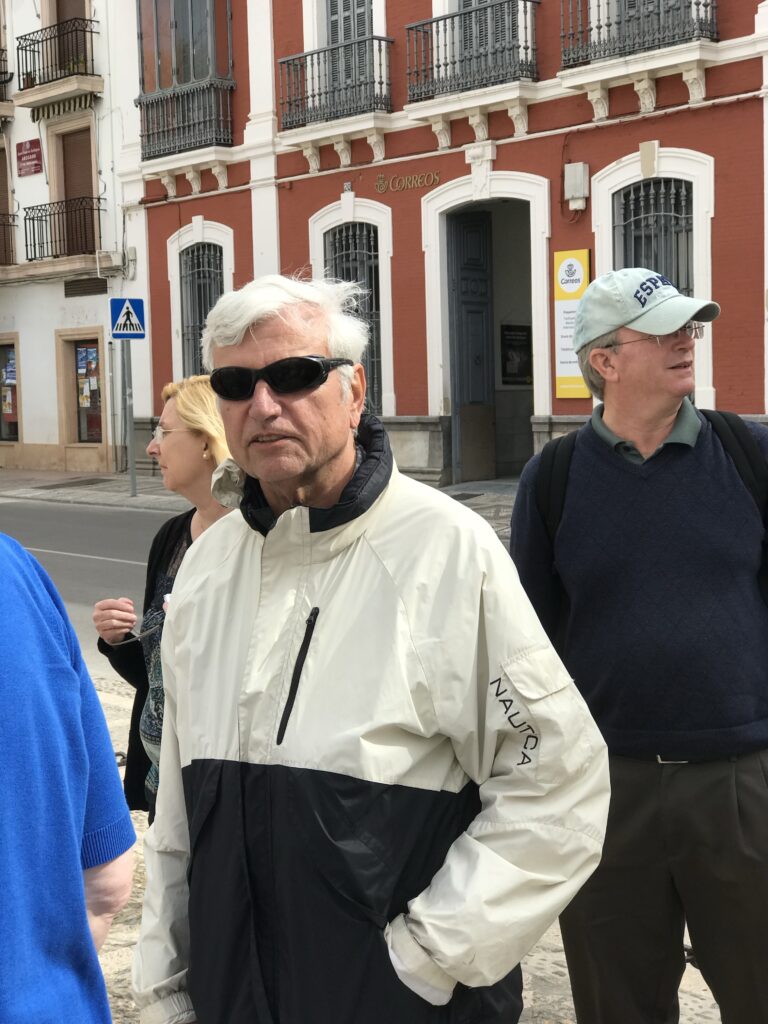
Ronda’s diverse attractions offer something of interest for professionals and enthusiasts across various fields, making it a rich destination for exploration and study.
Ronda’s Timeless Tale
In ancient days, where mountains rise, Ronda stood beneath the skies. Romans came with roads and might, Built their bridges, strong and bright.
Through the ages, Ronda grew, Moorish arches, a stunning view. Minarets and gardens green, Echoes of a time serene.
Napoleon’s troops once marched through, In the hills, resistance grew. Bandits roamed, with hearts so bold, Stories of their deeds retold.
Hemingway, with pen in hand, Wrote of Ronda’s rugged land. Bullfights fierce, and tales of war, In his words, the town’s folklore.
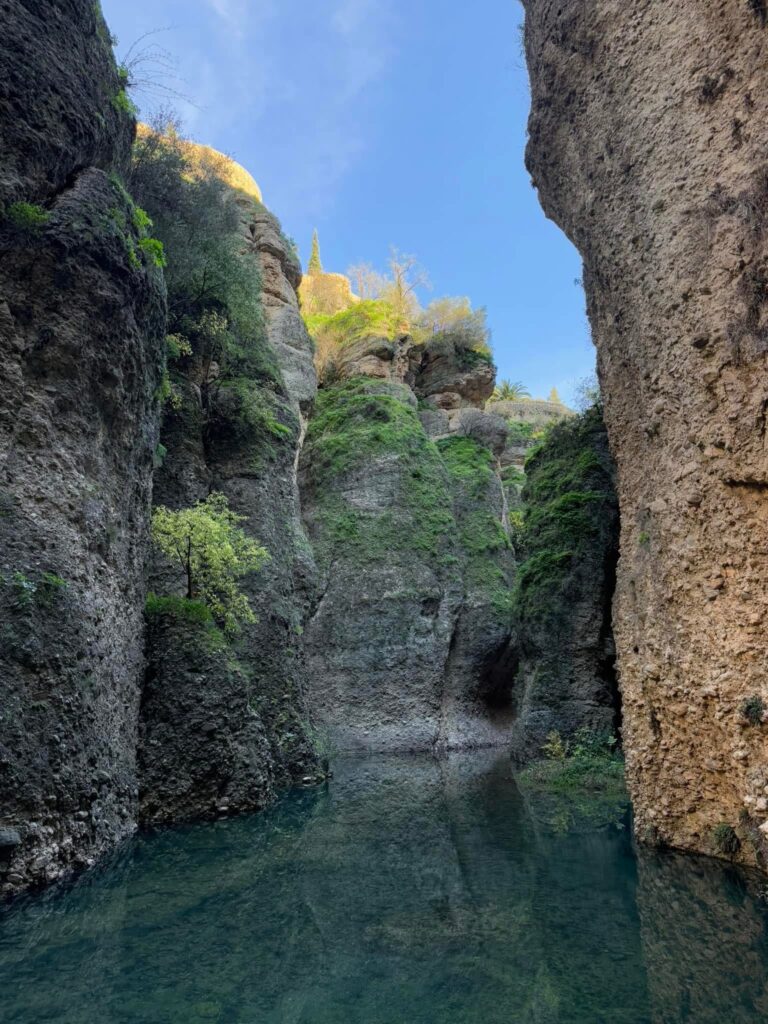
Now a gem of history, Ronda’s charm for all to see. UNESCO’s list, a rightful place, A heritage of timeless grace.


